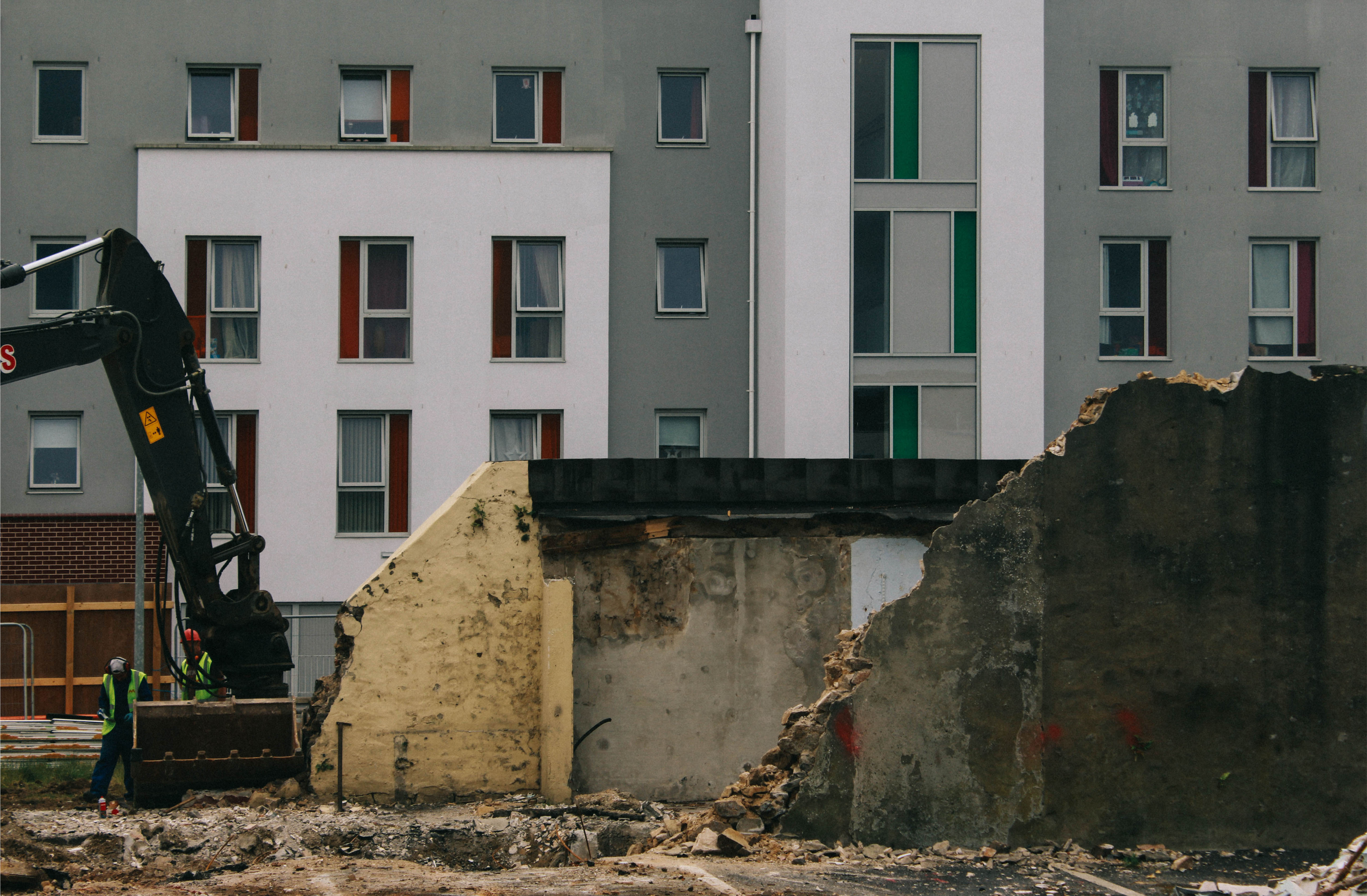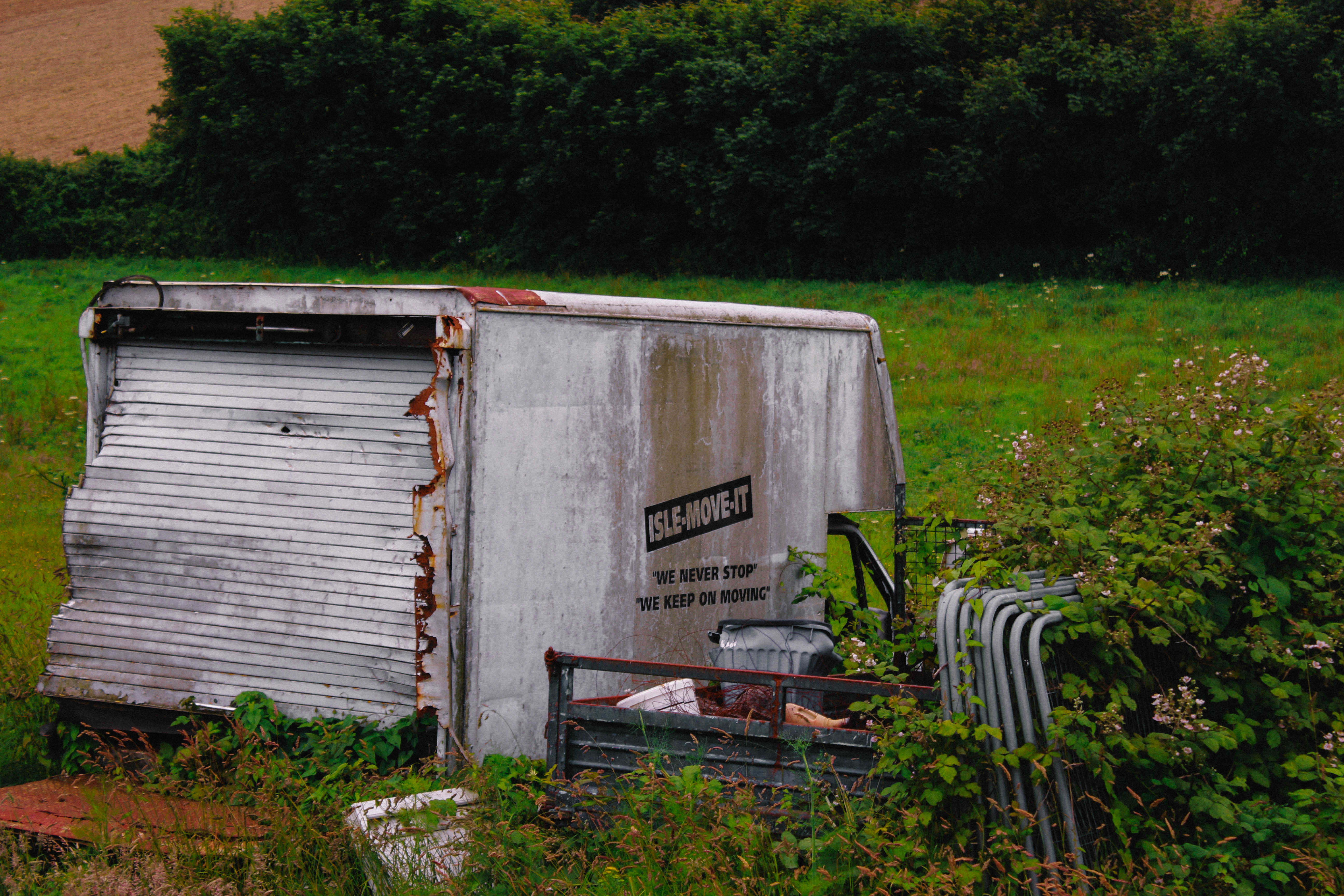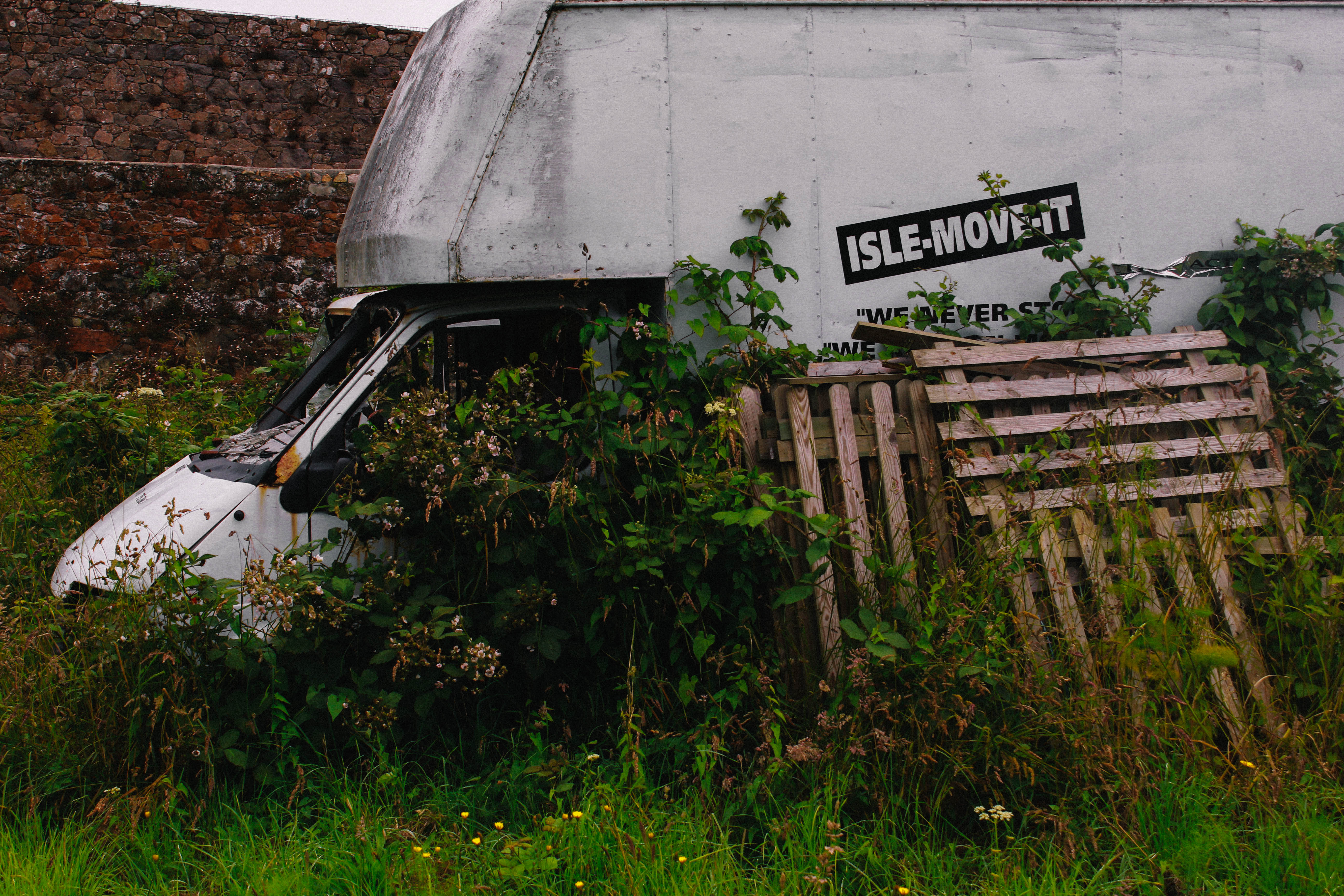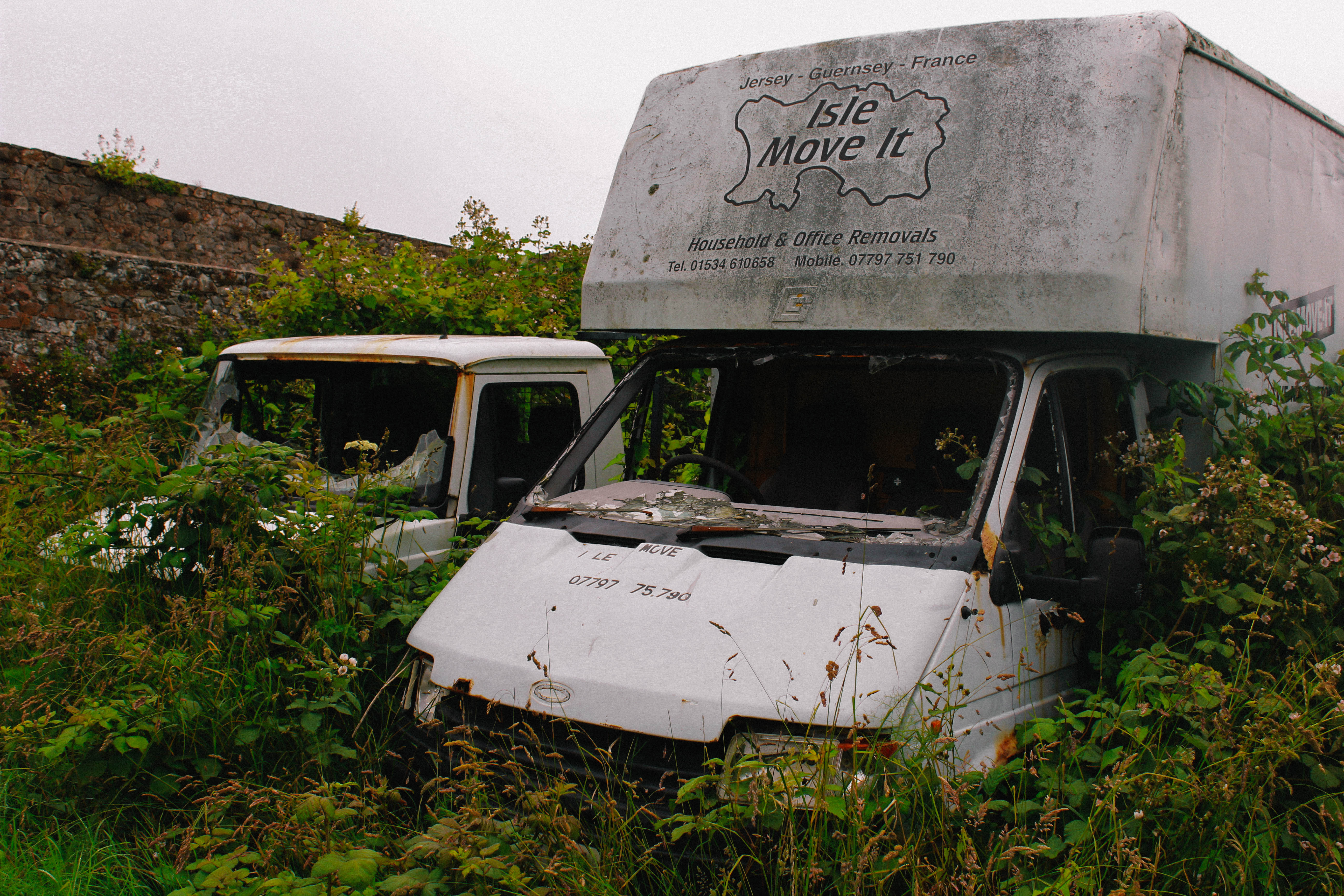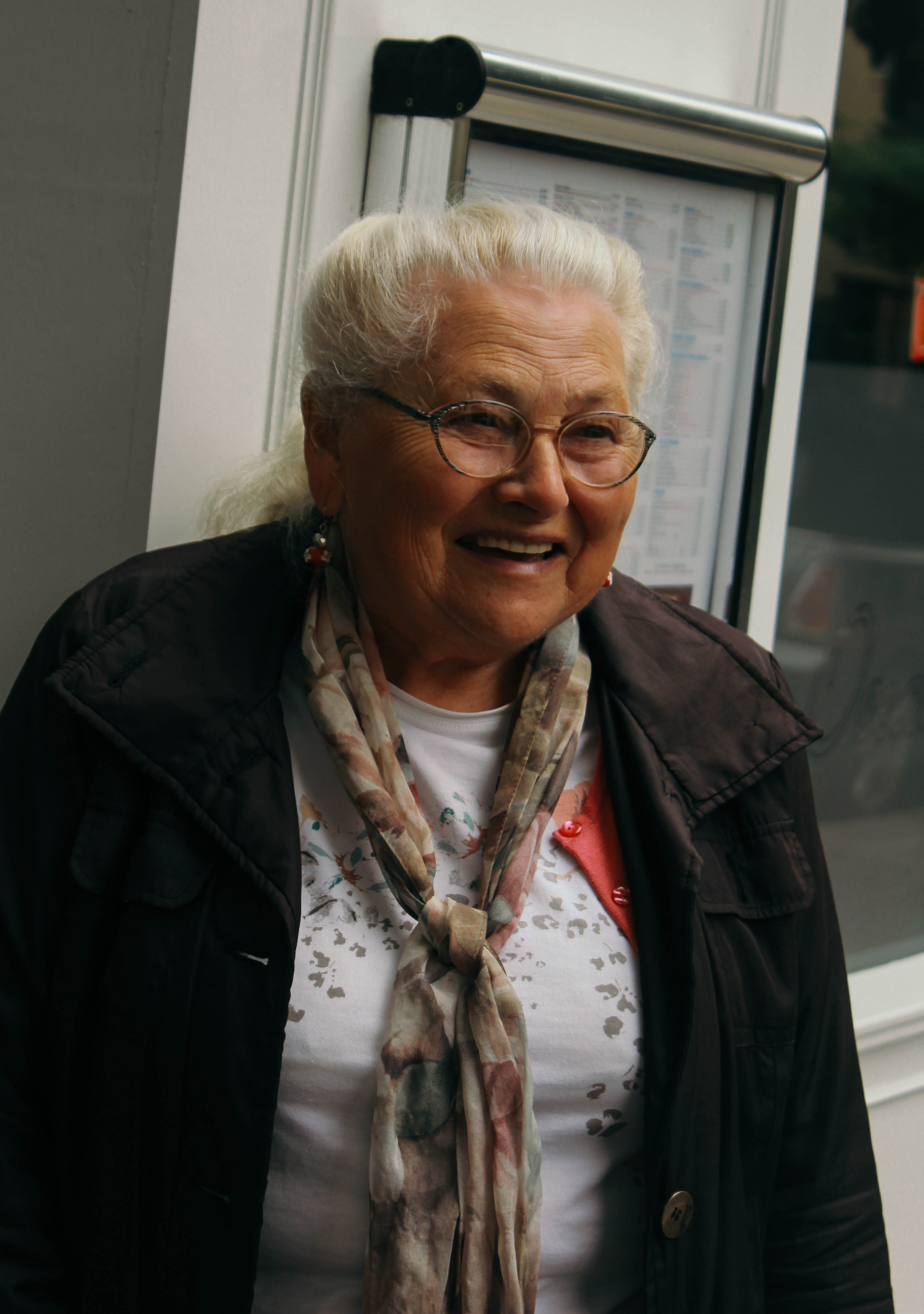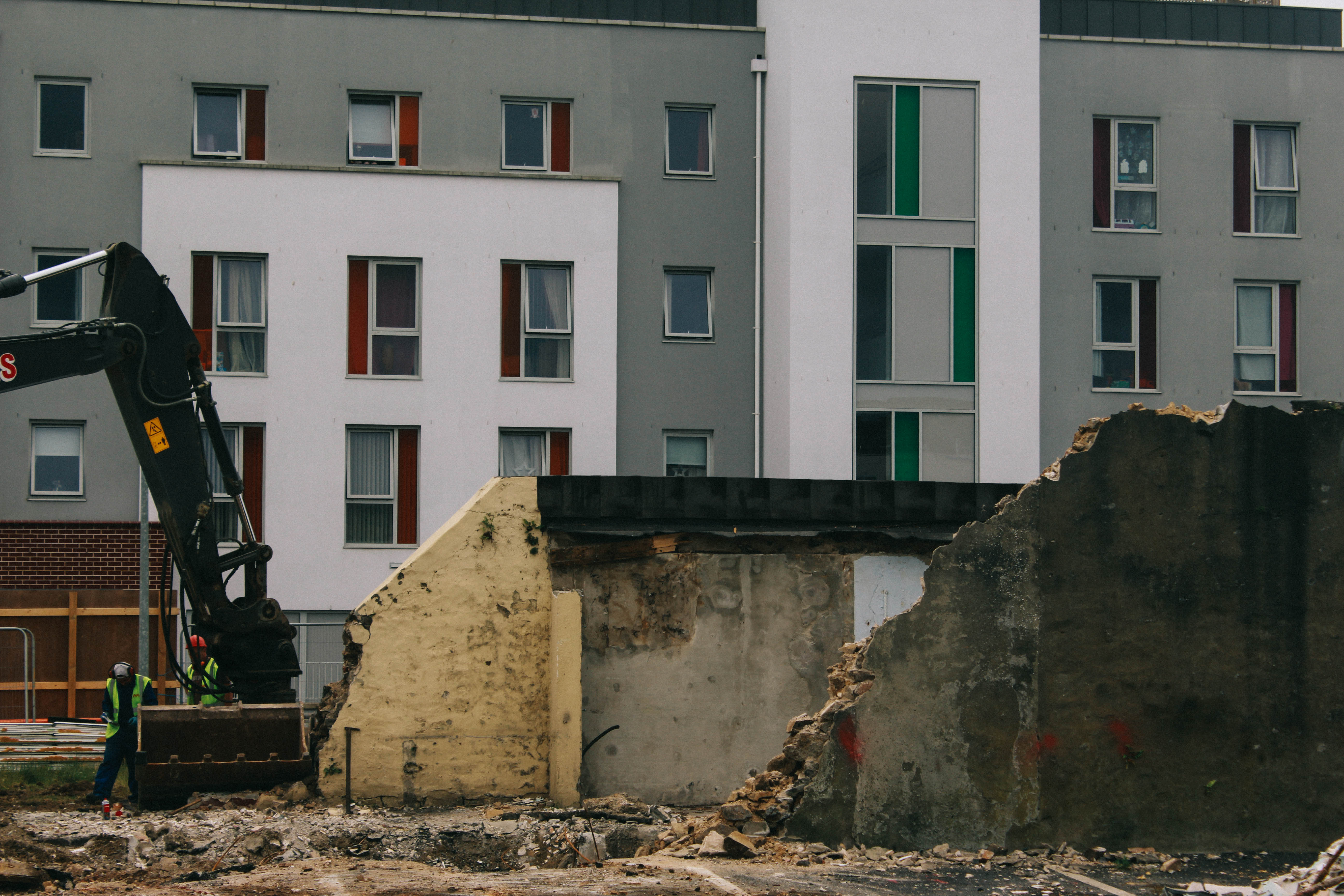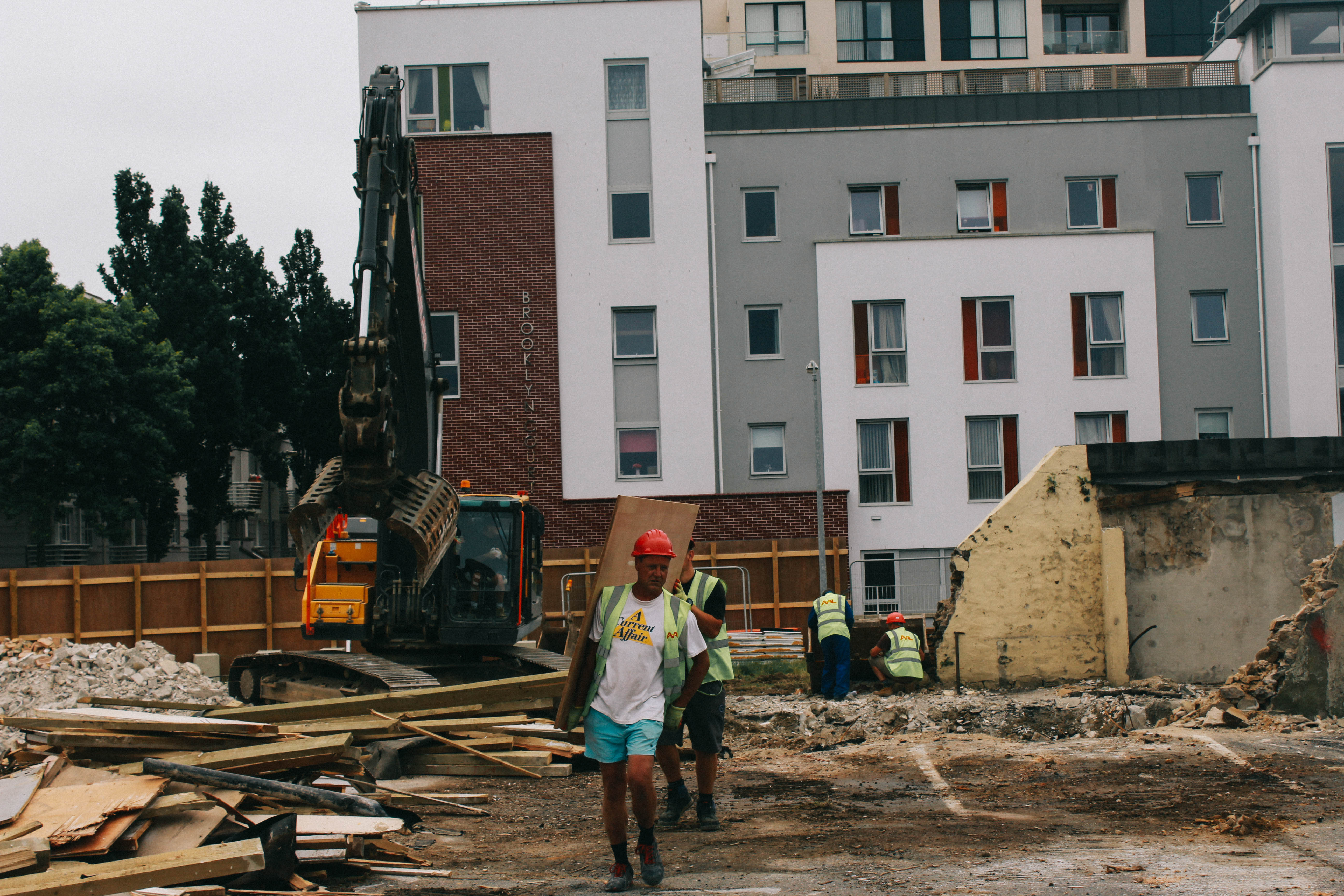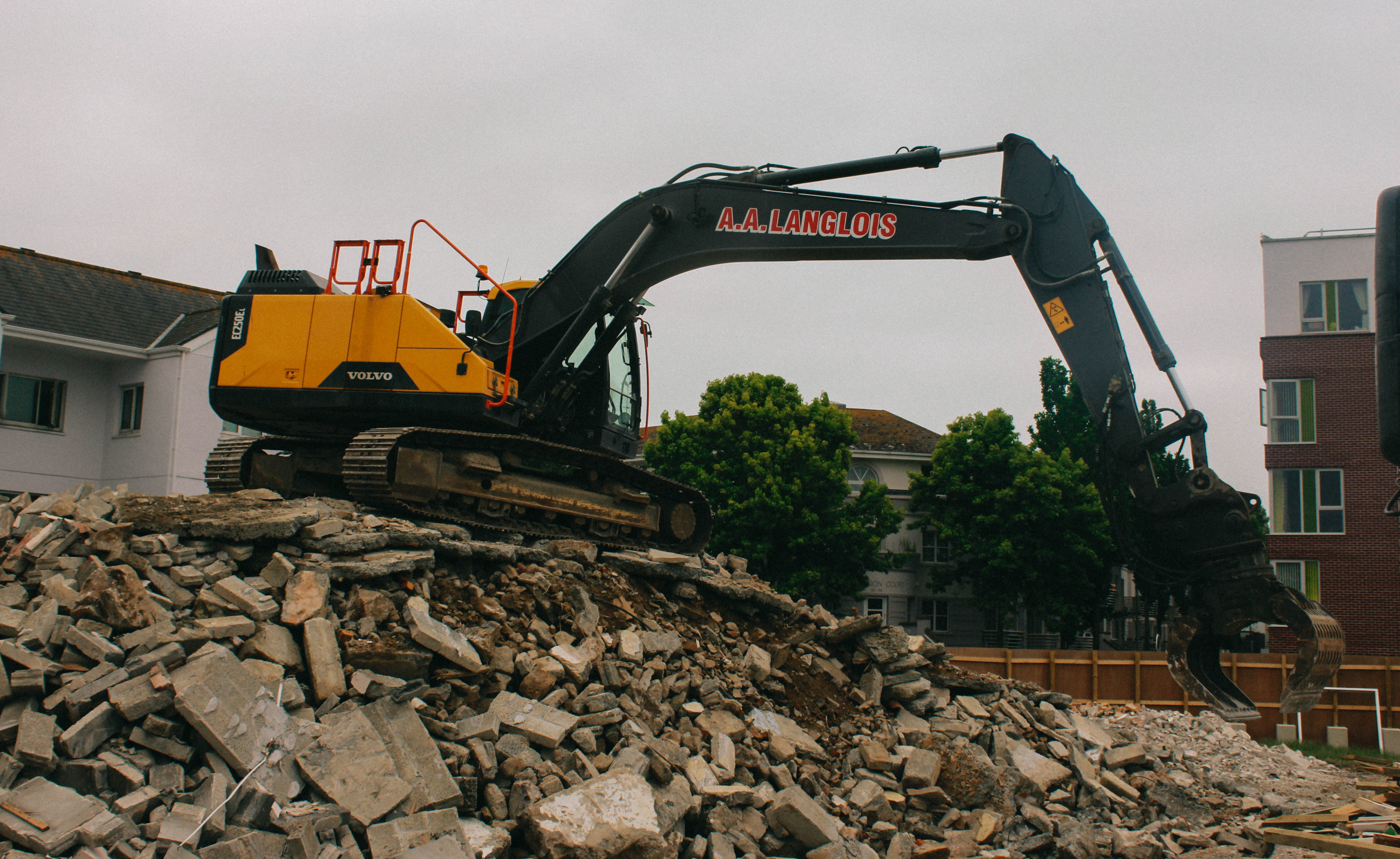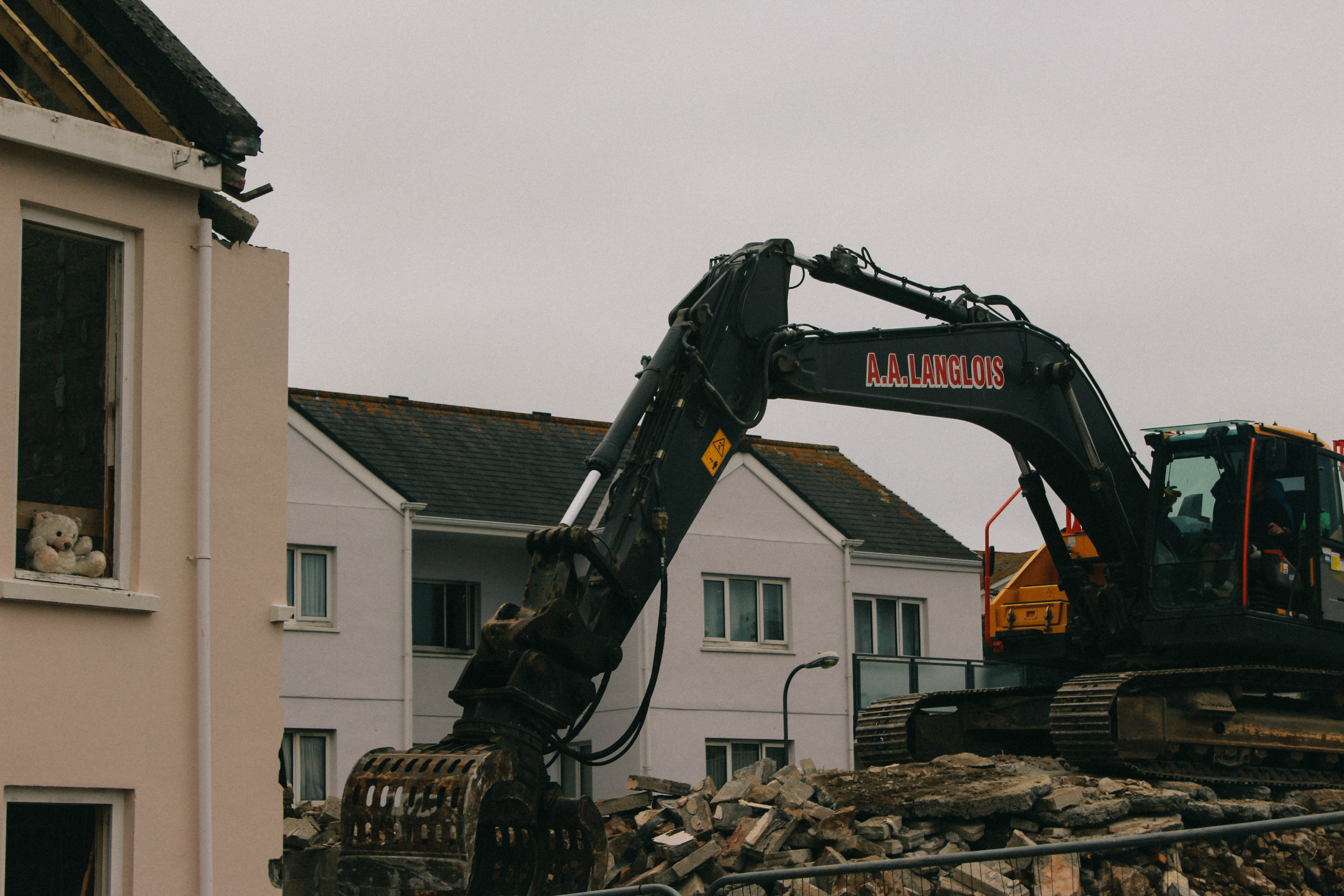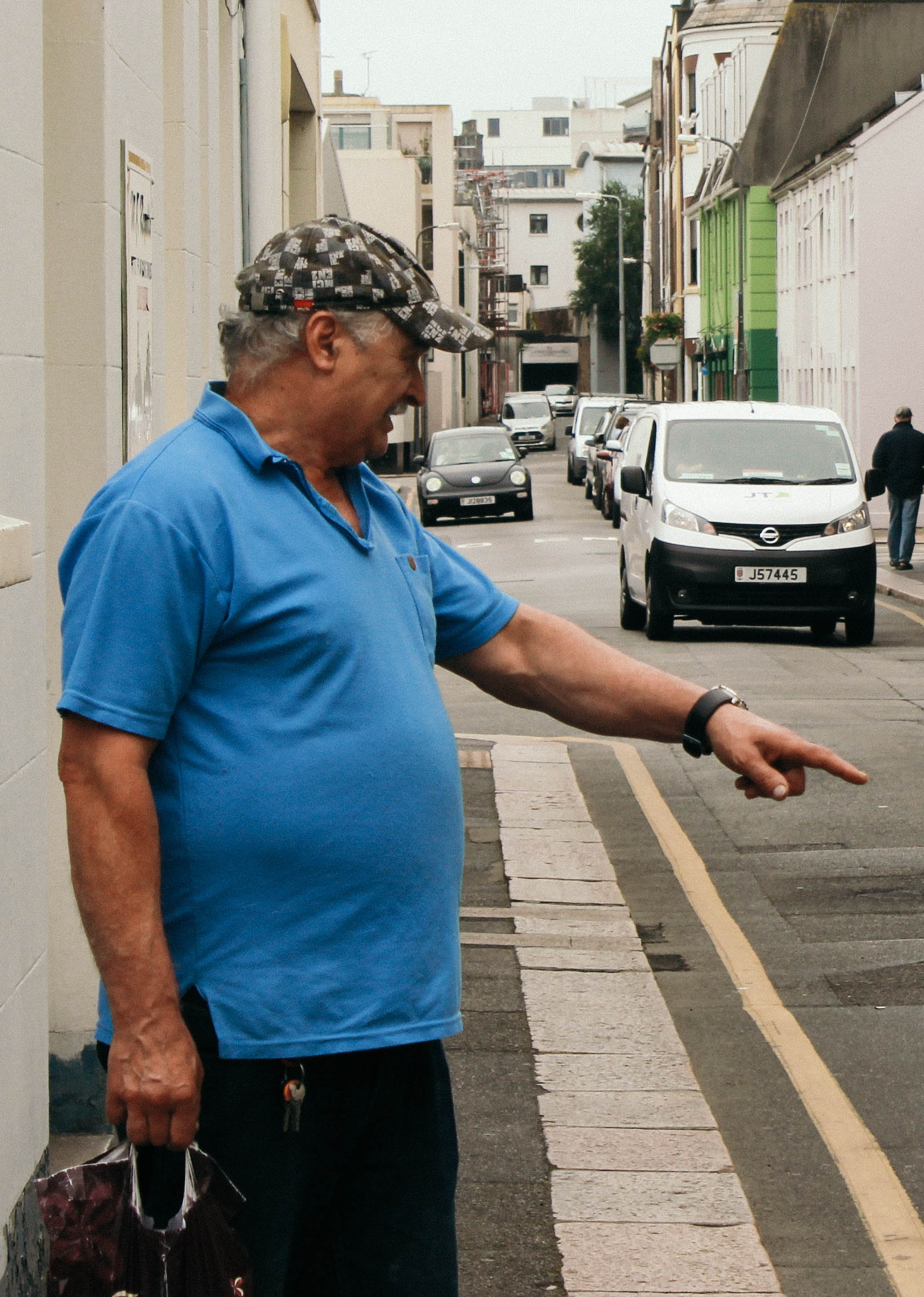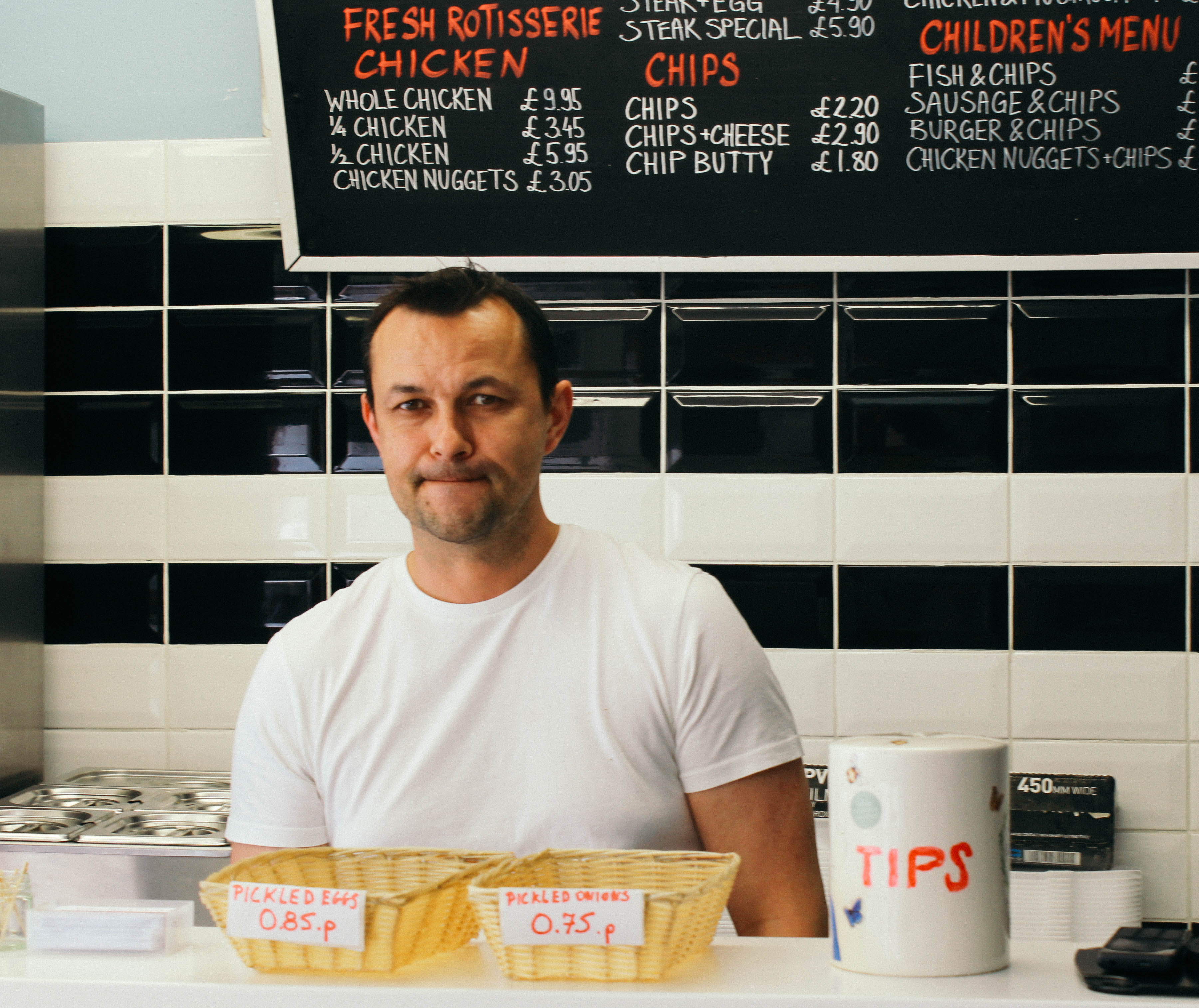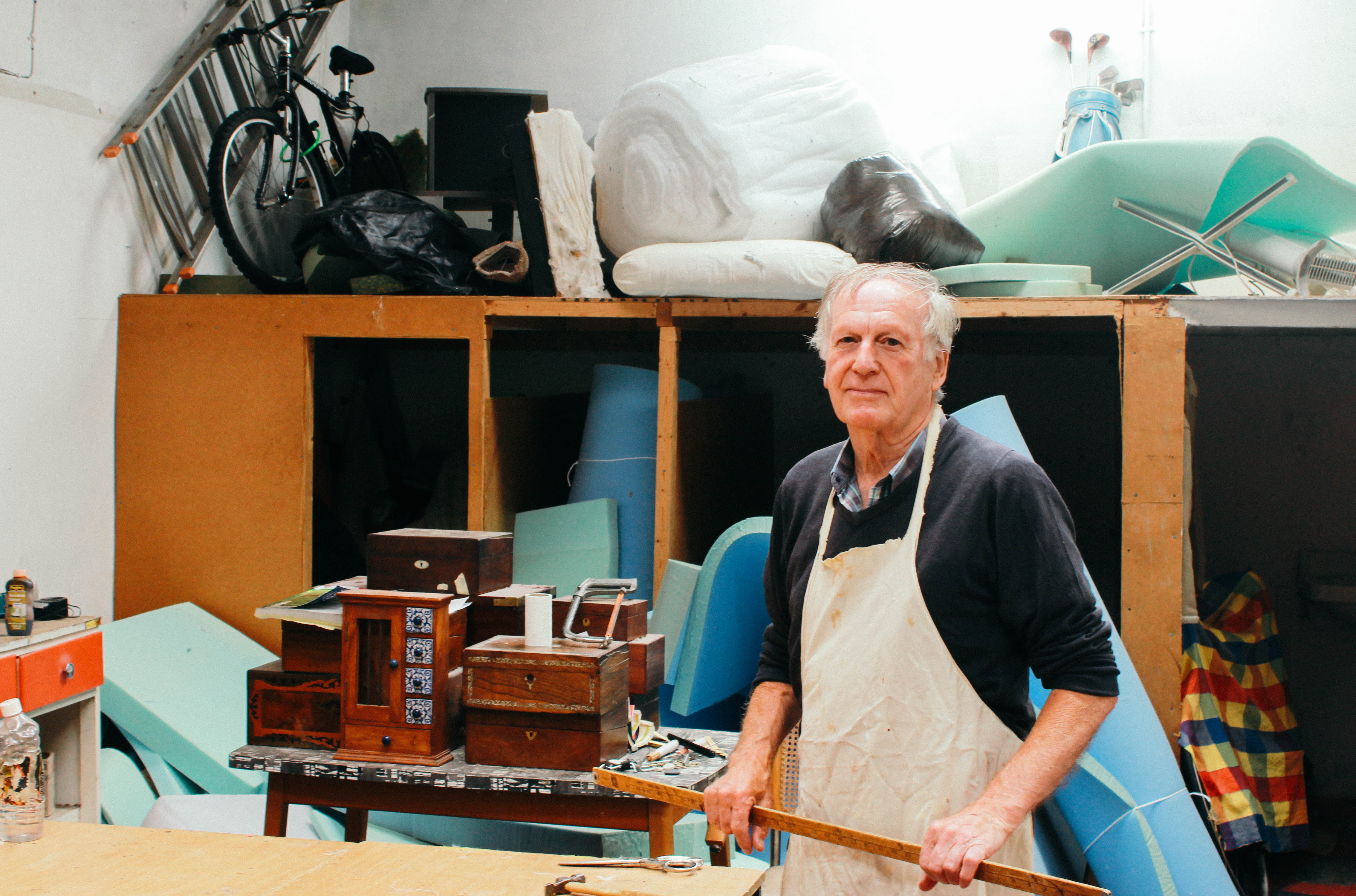Photograph 1
This cropping involves perspective cropping in order to create straight lines within the photograph for aesthetic effects. This cropping shows both of the bears in the photograph along with the two natural framings which are the windows. It also shows some context in the way that you can see the house is falling apart/being taken apart.

This cropping makes the white bear the focus of the photograph as it crops out everything else. I prefer the first cropping as it provided for context and interesting subjects for the photograph.
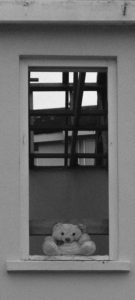
This cropping removes the skeleton of the house to allow the photograph to focus more on the two bears in the windows. I like the idea of focusing on the bears but I feel that the skeleton of the house is a vital part of the photograph in order to provide contrast between structures

This cropping is similar to the third cropping as it focuses on a similar bear. I feel that it does not have as much affect as the third cropping as this bear does not provide contrast through brighter tones.
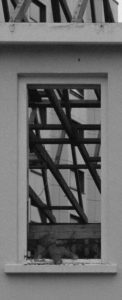
The first cropping is the cropping that I will use for this photograph as I feel that it shows everything needed in the photograph including contrast, tonal ranges and interesting subjects – to the extent that cropping it anymore would mean taking away from the photograph.
Photograph 2
This cropping shows more context leading on from the first photograph – it shows where the bear is and what is going to happen to it. The contrast between the hard digger and the soft teddy bear creates an interesting photograph as it makes the viewer wonder about the bear’s story.

This cropping takes away the focus from the bear as it focuses on the digger on the mound of rubble. This creates a harsher image and it only shows destruction. I prefer the first cropping over this one as it provides a bit more context.
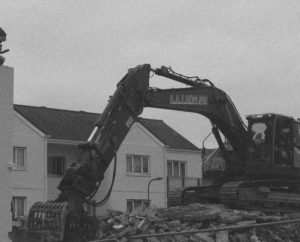
This cropping is the opposite of crop two – it focuses on the bear rather than the digger. This makes the viewer think a bit more about who the bear belonged to and why it has been left behind. I feel that this composition does not show enough of the harsh reality that is the digger.
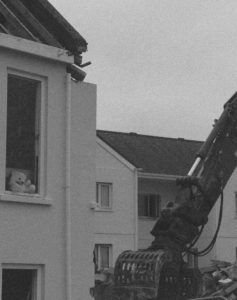
This cropping focuses on the main body of the digger and the man controlling it. This helps to convey the message that it is the machine that does the destroying but it is only acting as a disguise for man.
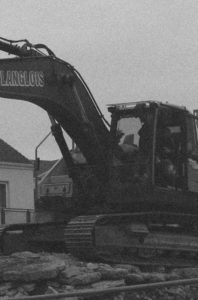
I will be using the first cropping as I feel that it shows all the context within the photograph in order to make the viewer think about what has happened here and what is going to happen in the near future. It provides plenty of contrast and tonal ranges compared to the other compositions.
Photograph 3
This cropping shows the digger from a different angle on top of the rubble, at an angle that makes the digger seem to have even more power. The trees and buildings in the background help to contrast with the destruction.

This crop takes away some of the rubble from composition one. This creates a composition more focused on the digger but I feel that it takes away from the superior feel given to the digger by the angle.
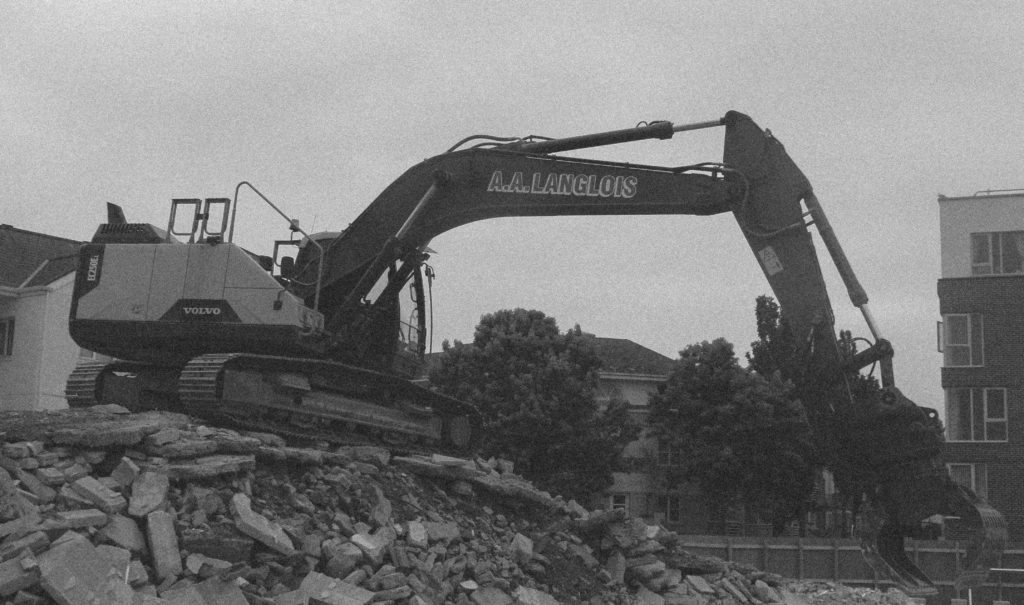
This cropping is similar to crop two but takes more height off of the image whilst keeping width. This keeps all of the context within the photograph as well as the wide photograph emphasising the length of the digger.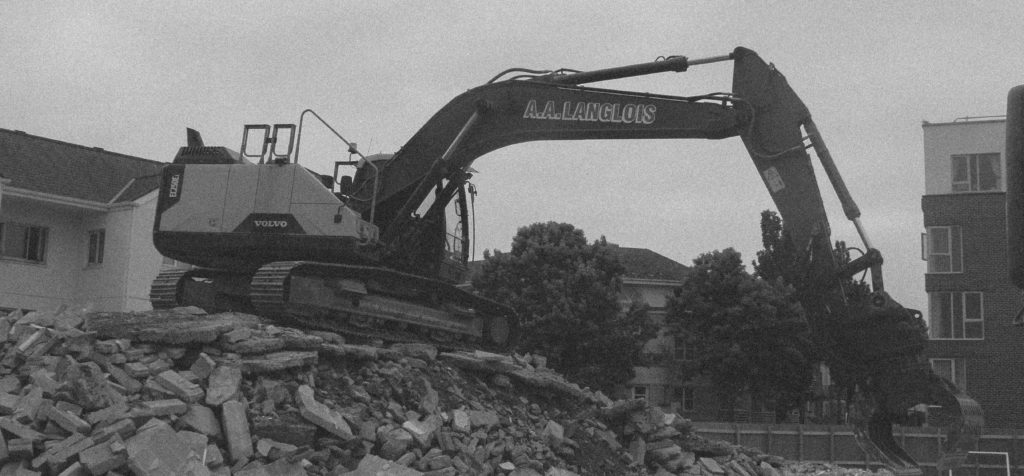
This cropping focuses on the main body of the digger and the man controlling it. This helps to convey the message that it is the machine that does the destroying but it is only acting as a disguise for man. I think that this crop takes out too much of the context and interesting subjects.
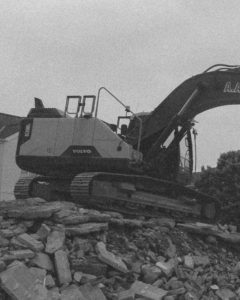
I will be using the third cropping as I feel that the wide composition emphasising the length of the digger is very effective and helps to convey the extent to which the digger can destroy.
Photograph 4
This cropping shows a building destroyed by the digger with a fully constructed building in the background. This creates contrast between the view of the destroyed and the view of the built.
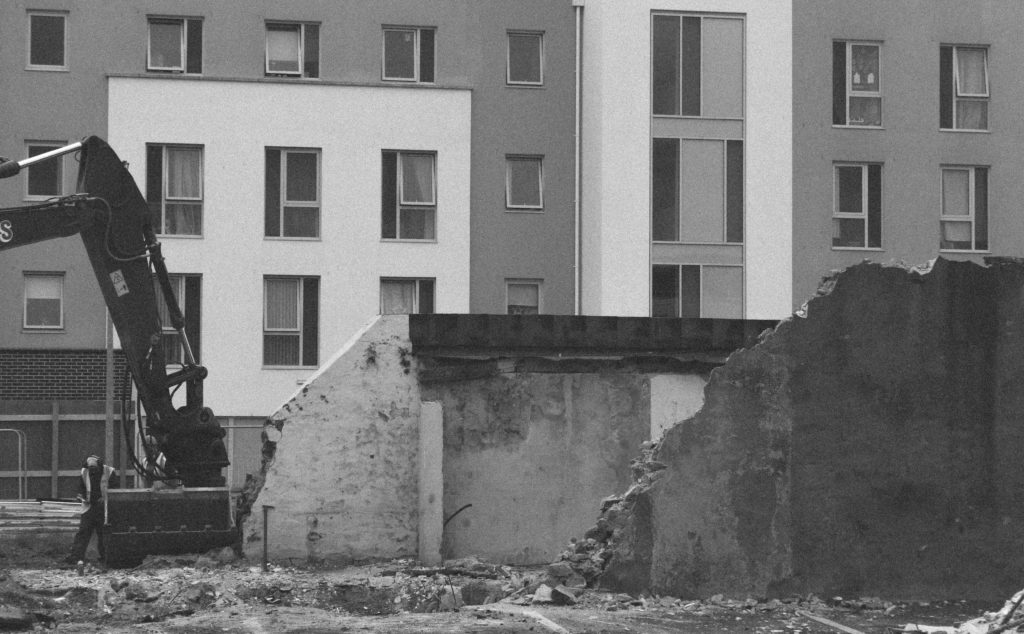
This photograph focuses on the digger but takes away from the context and scale of the building, creating a less satisfying photograph.
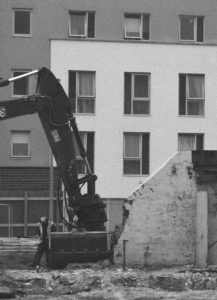
This cropping is the opposite of crop two – if focuses on the destroyed building rather than what did it, meaning context has been taken away.
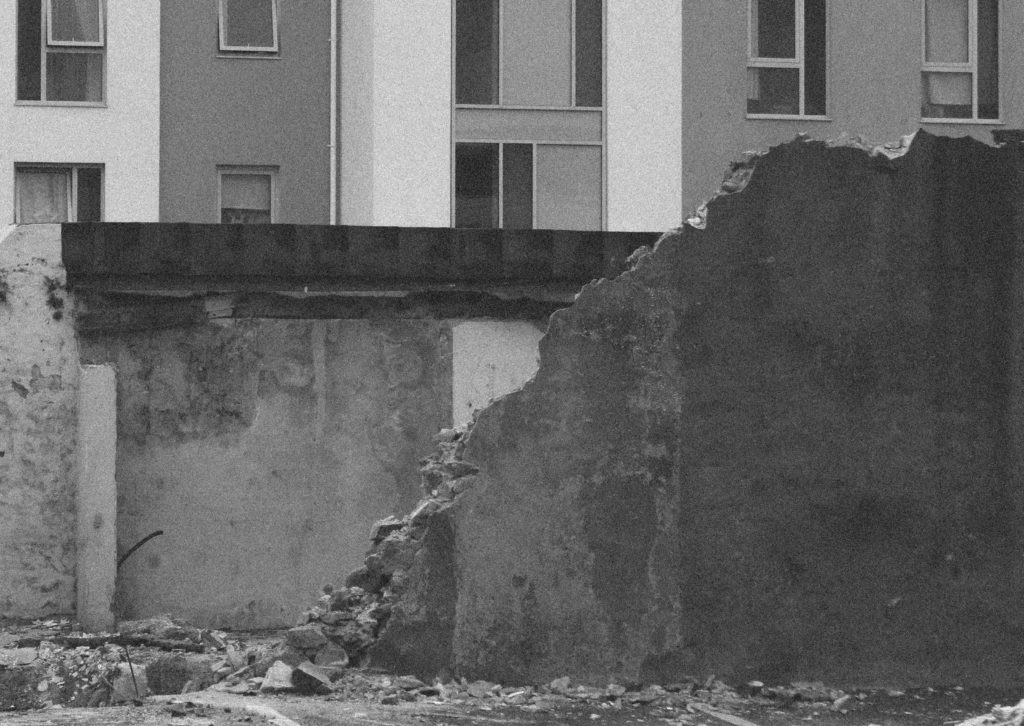
This cropping is similar to crop two in the sense that it takes away from the scale of the building, although it keeps some context by including the digger.
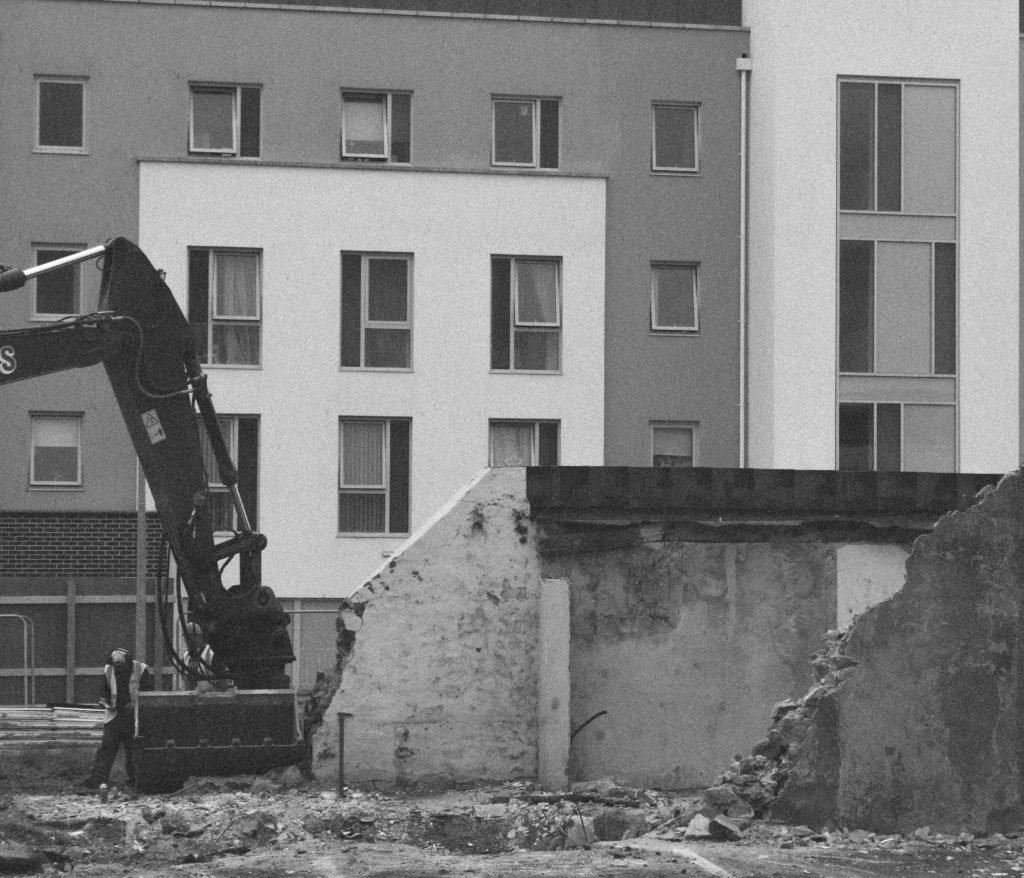
I will be using the first crop as I feel that it has well-placed subjects to create an aesthetically pleasing photograph whilst conveying the idea of destruction and rebuilding.
Photograph 5
This cropping of the photograph sets the main subject in the centre in order to lead the eye to it straight away. This is effective as the people, machinery and building in the background are not instantly noticeable.
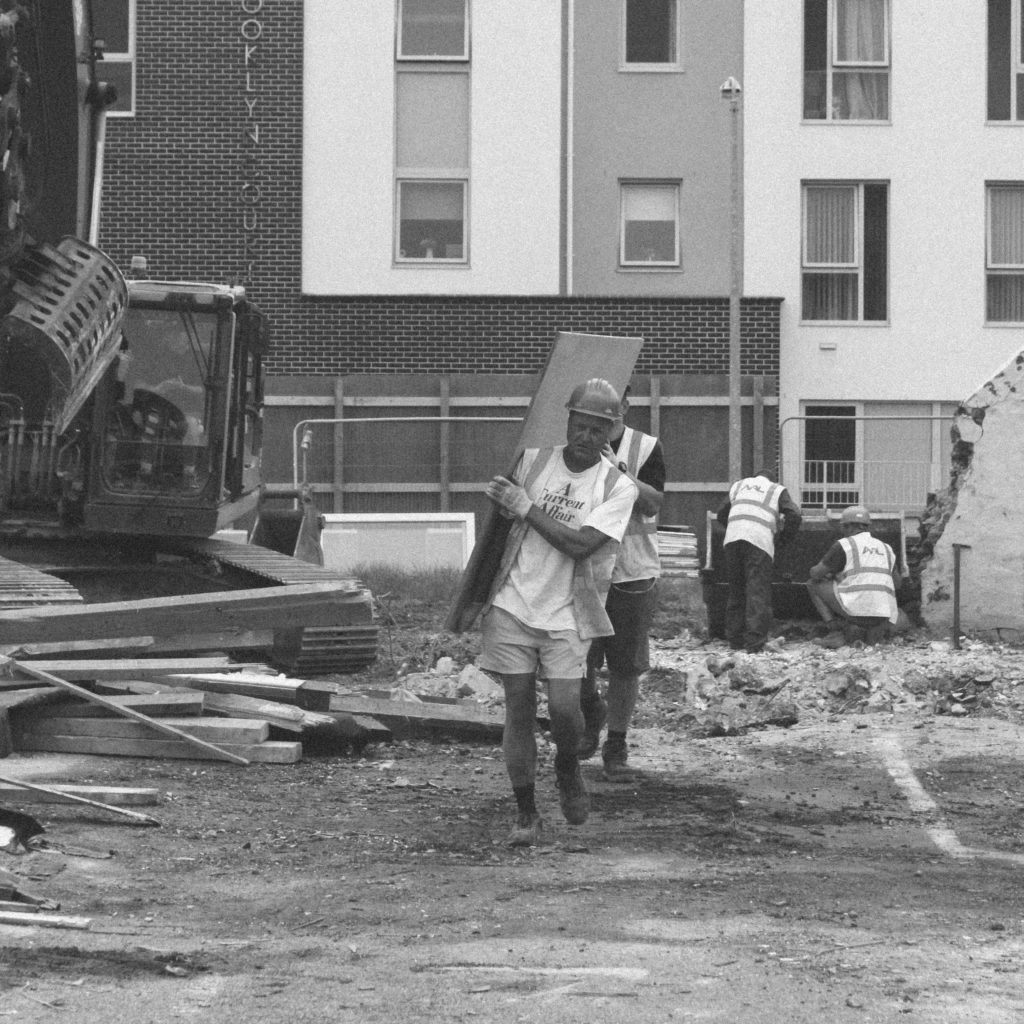
This crop focuses even more on the builders, it takes out any of the unnecessary subjects in the background to create a more effective composition.
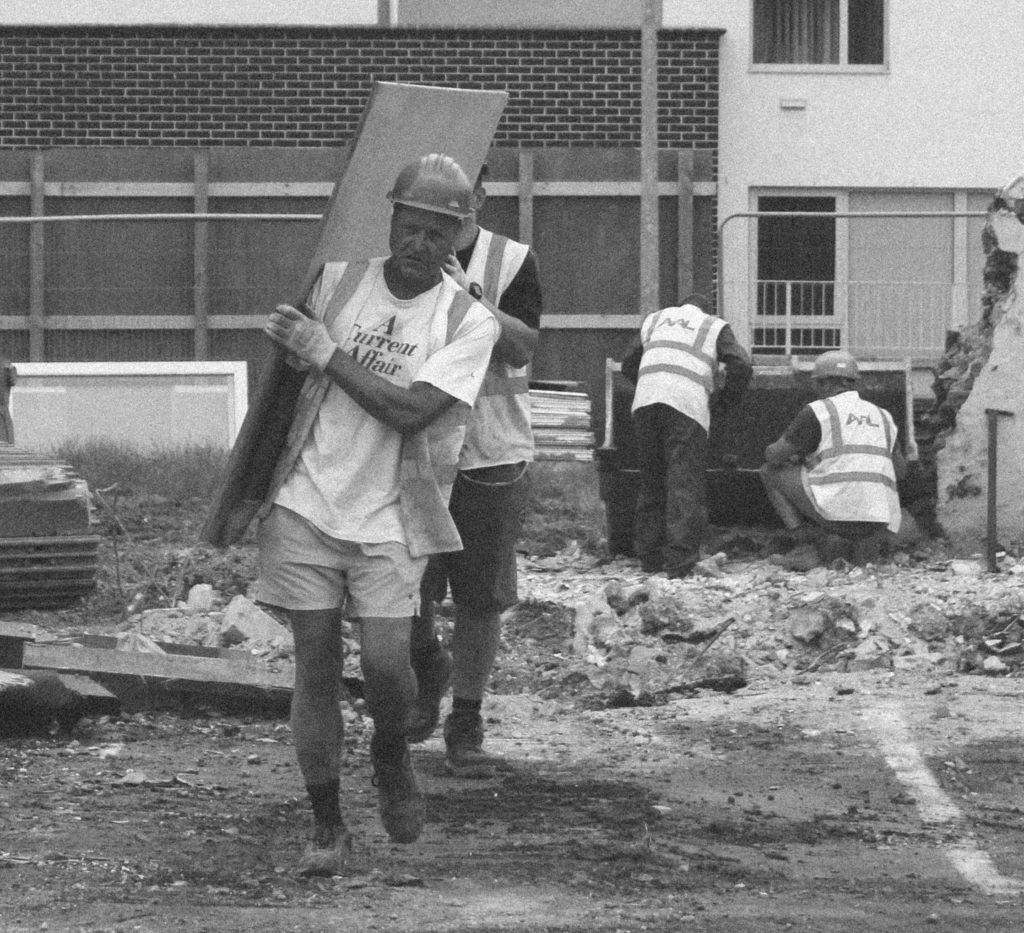
This crop is similar to crop two but I think that too much of the background has been cropped out, which takes some of the interest out of the photograph

This crop is similar to crop two as it removes some of the background but I feel that this composition is not as strong as the background in this composition is slightly distracting.
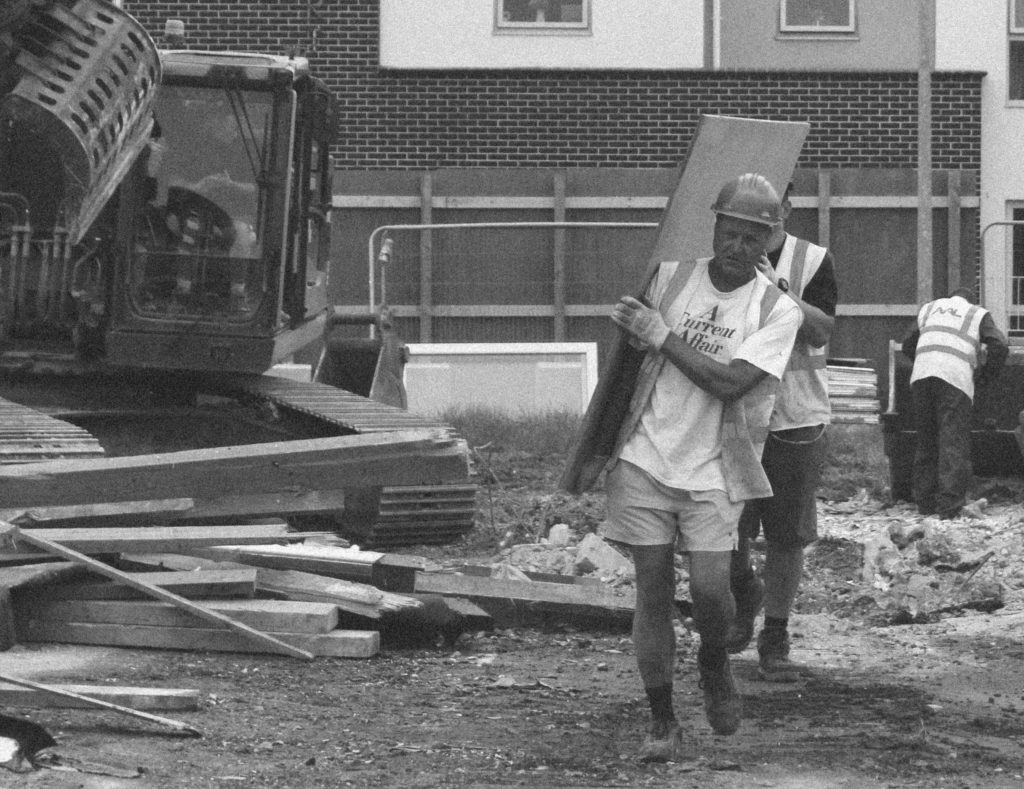
I will be using the second composition as it shows all the context needed whilst keeping the photograph simple and effective to convey the message of rebuilding.
Photograph 6
This cropping shows a house shell with just the scaffolding on it – it is effective as it shows the subject for what it is but could possibly be cropped more dramatically to create a more aesthetically pleasing photograph.
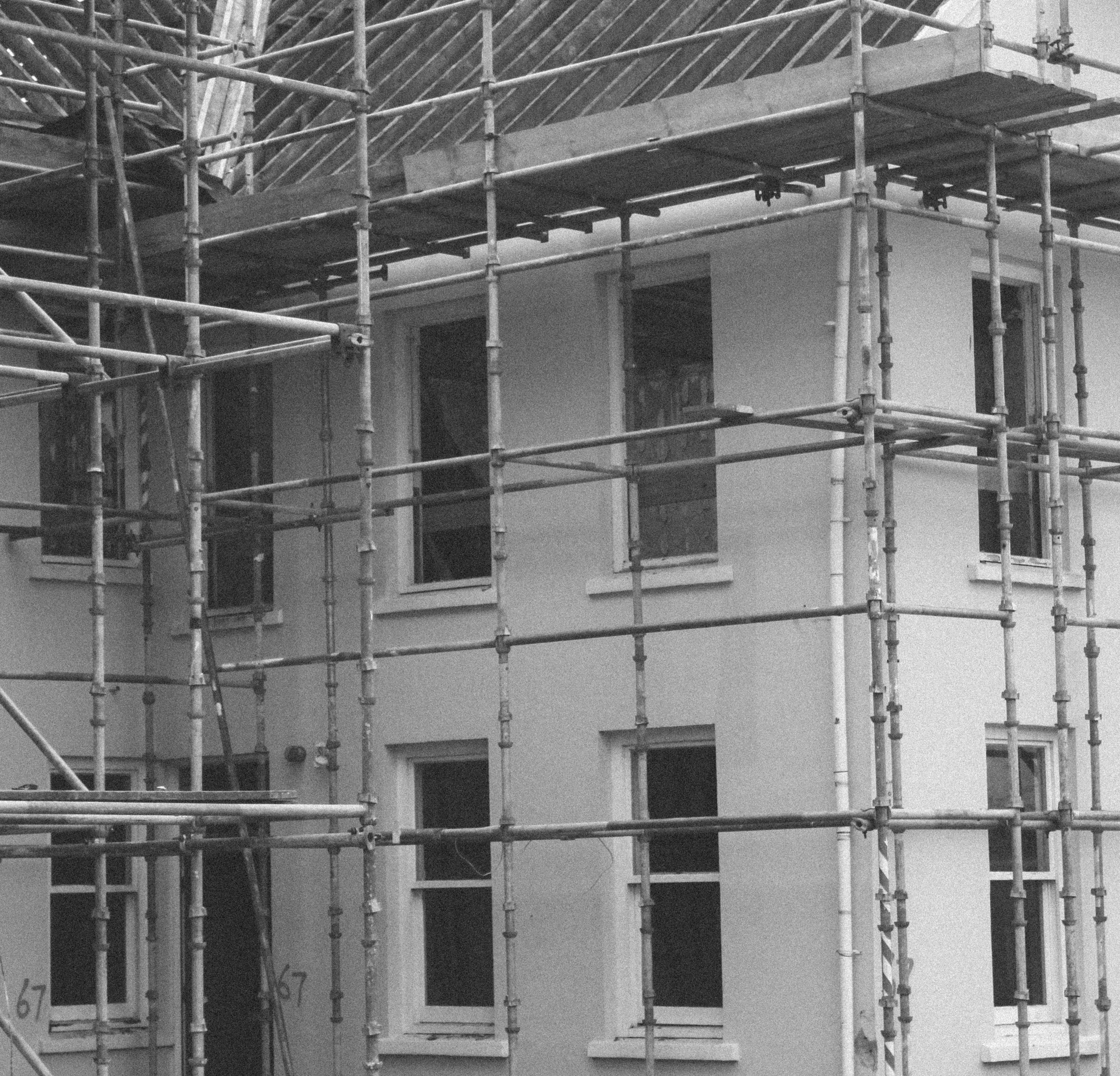
This crop takes all of the unnecessary parts of composition 1 out to create a more focuses and slightly abstract composition. It focuses more on the shapes within the photograph and the contrast between light and dark.
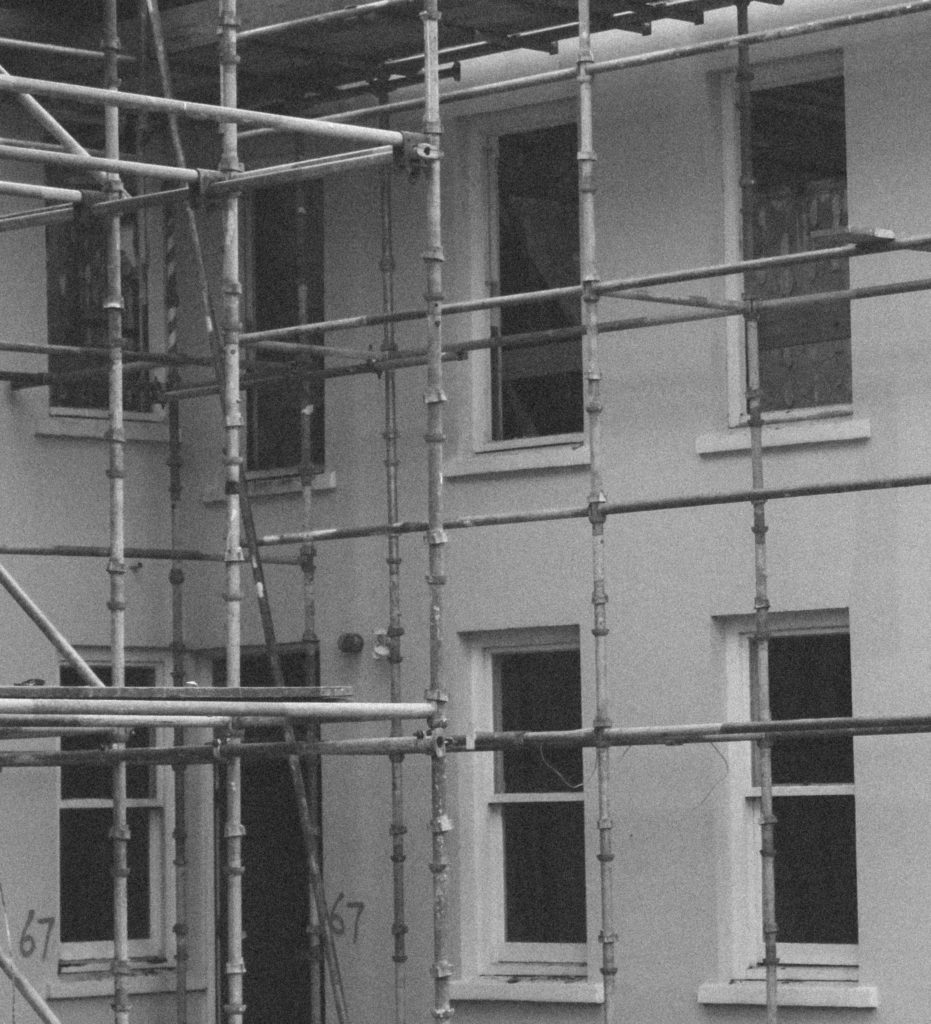
This photograph focuses on the top half of the house – to me there is too much unnecessary parts in this composition so is not as effective as crop two.

This composition crops out a lot of the photograph to create a focus on the linear scaffolding. I think that too much context has been taken out of the photograph in this composition.
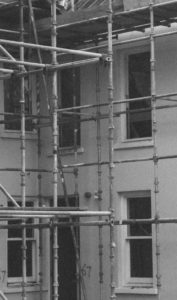
I will use the second composition as it has an effective focus on shapes and contrast whilst removing any unneeded context.
Photograph 7
This composition shows contrast between the destruction on the building site and the clean architecture of the building in the background.

I feel that this composition takes away too much context by removing the view of the building in the background along with the scaffolding.
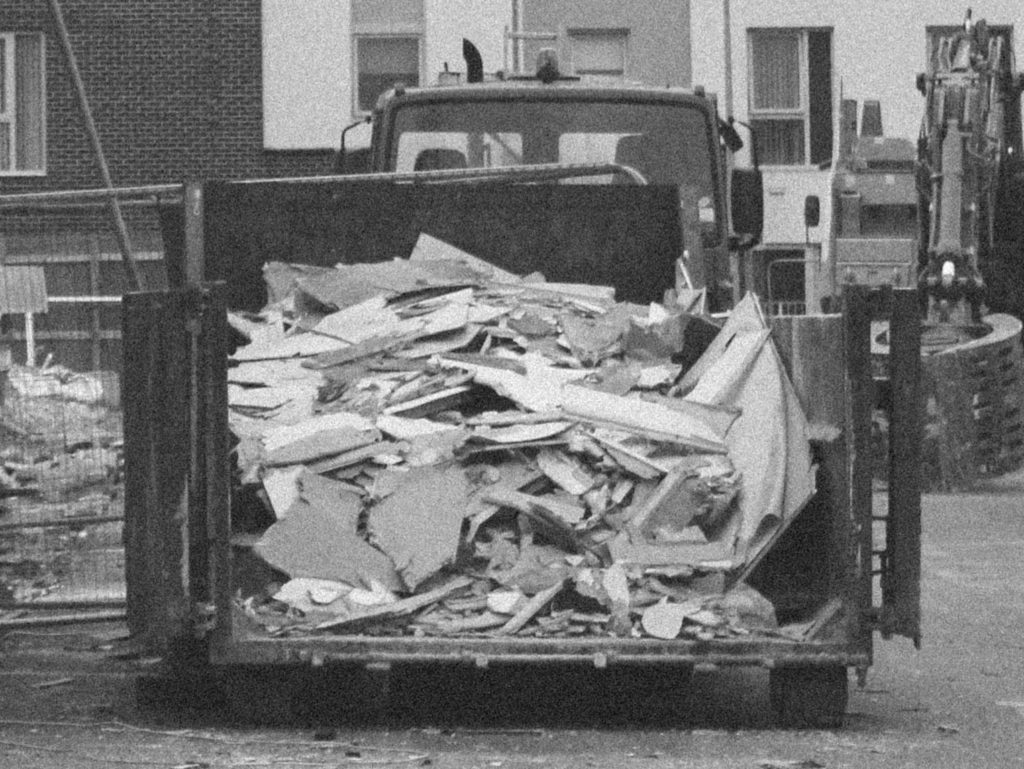
This composition focuses purely on the scaffolding of the building. I like the idea of focusing entirely on one area of the photograph but it doesn’t show enough to make the photograph interesting.
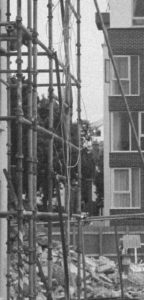
This crop focuses on the skip whilst keeping the context of the buildings in the background. It contains a lot of context but I feel that the scaffolding is a vital part of the photograph.
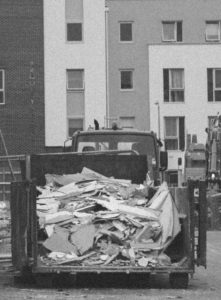
I will be using the first composition as I feel that there is plenty going on in the photograph, making it a very interesting photograph to look at.
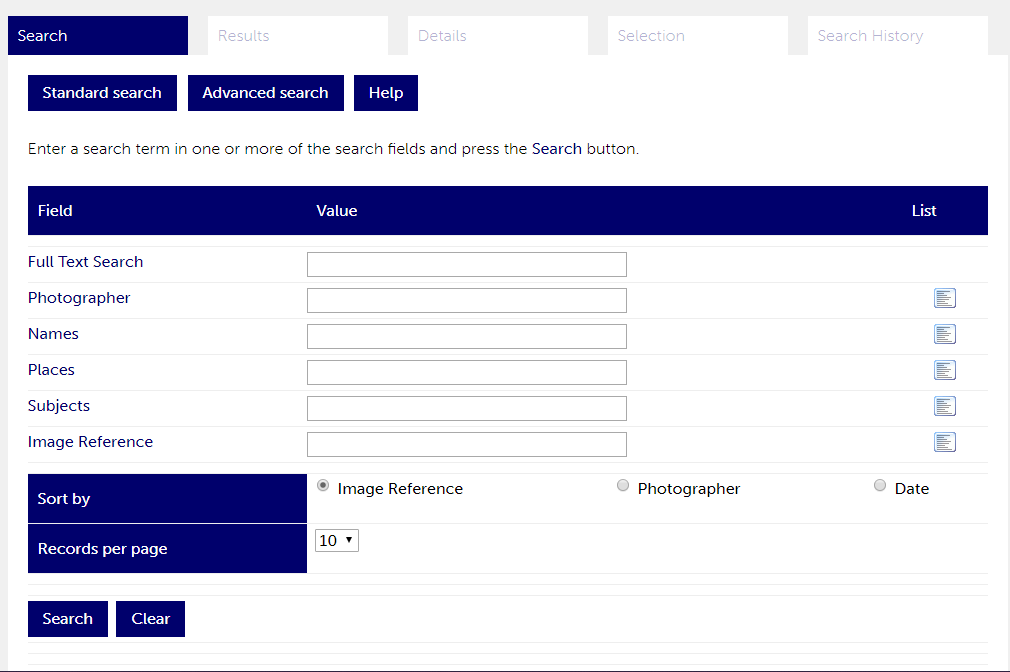









































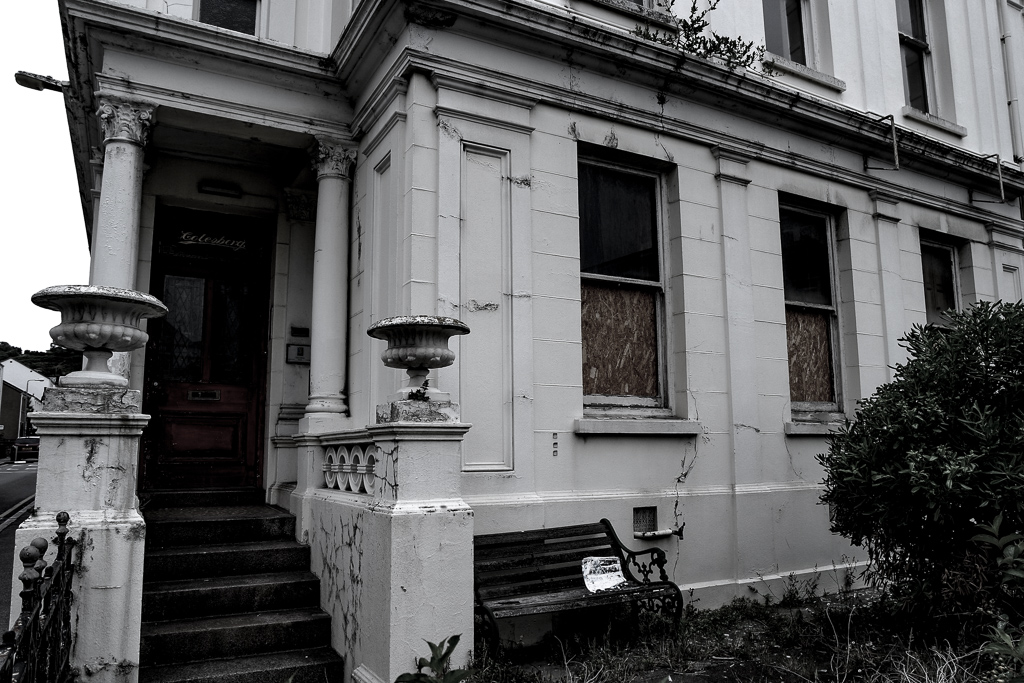
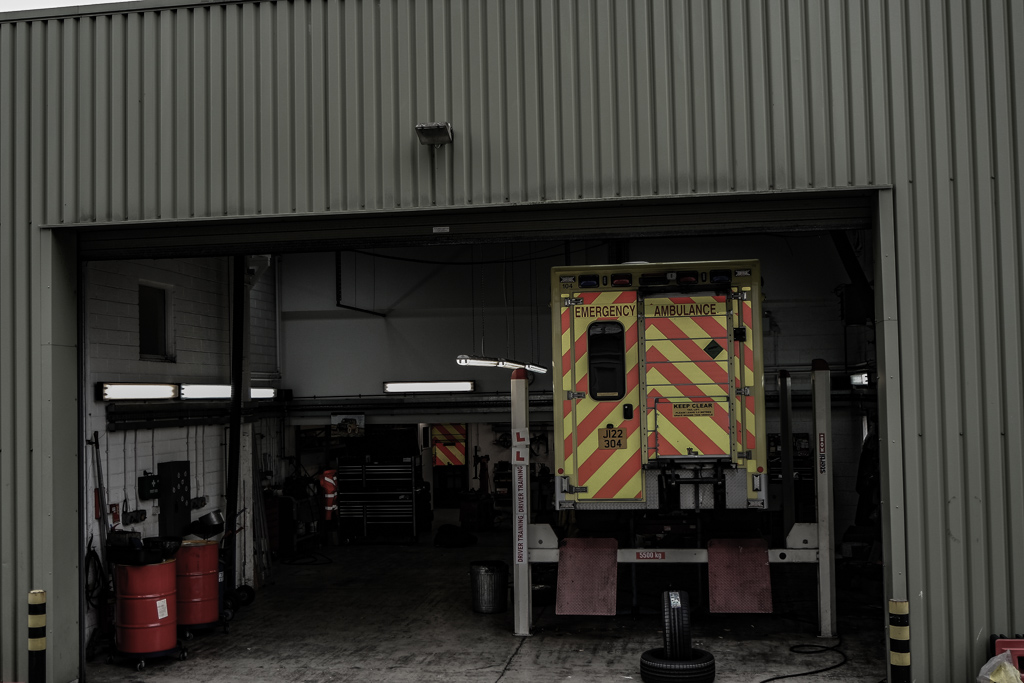
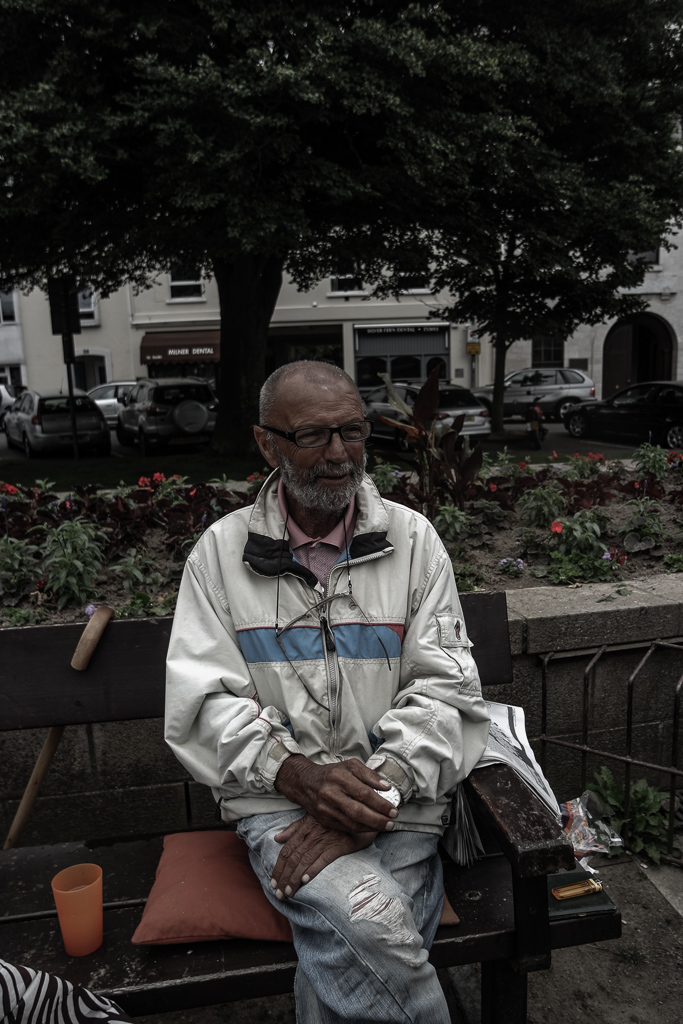
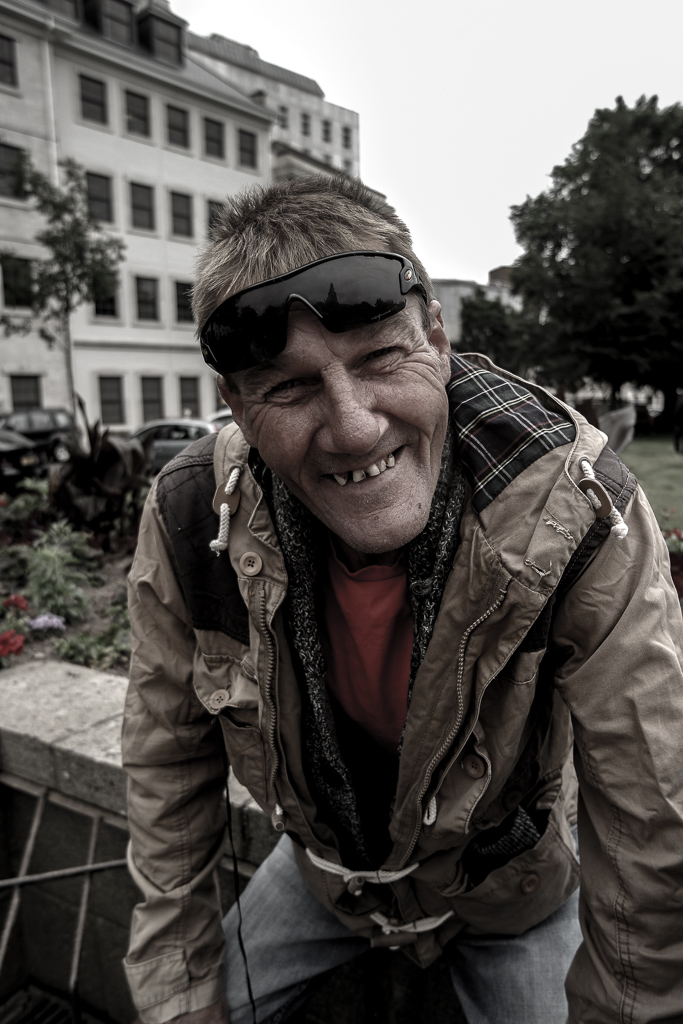
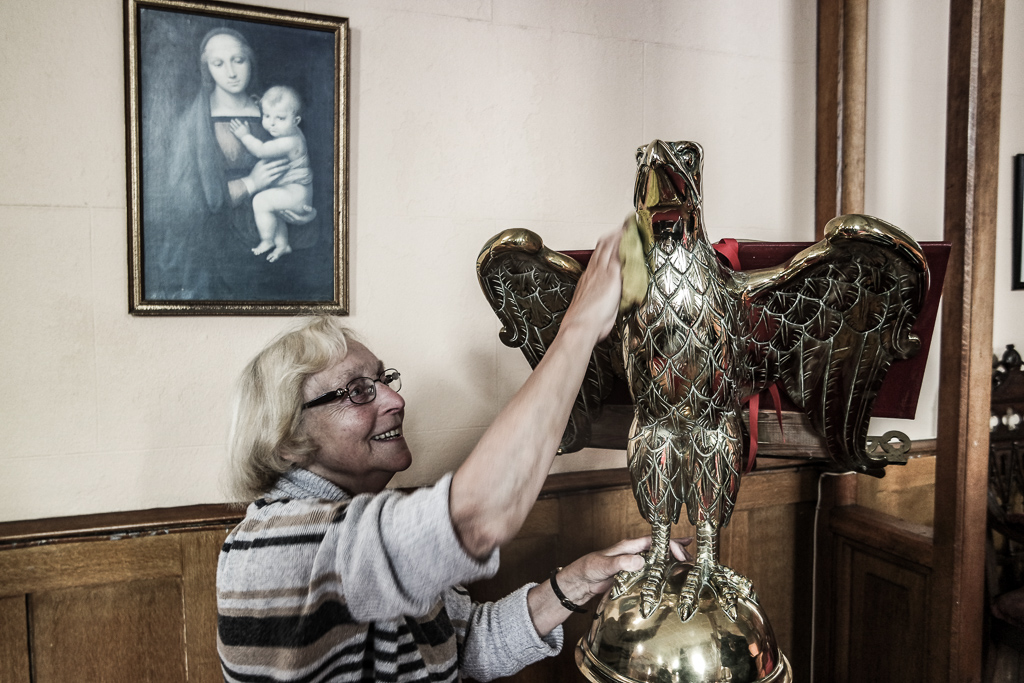
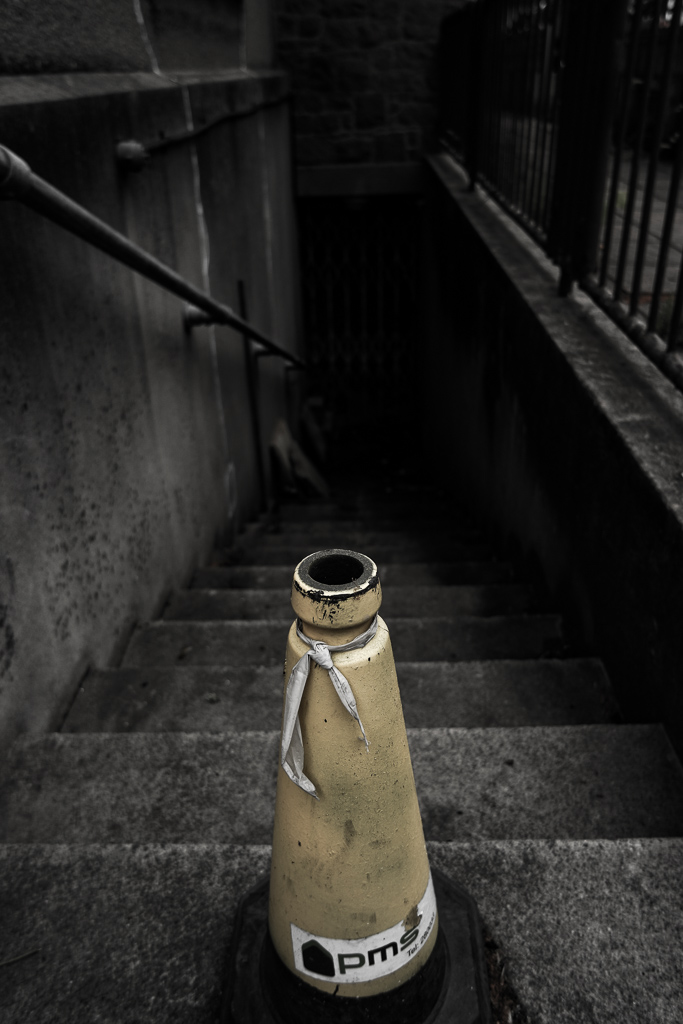
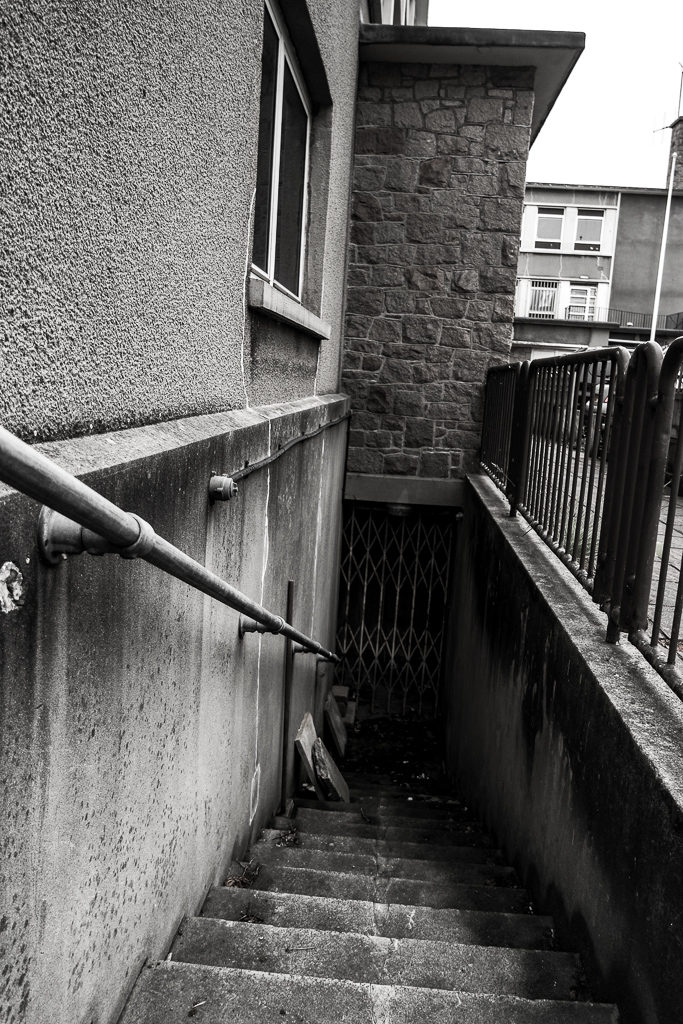
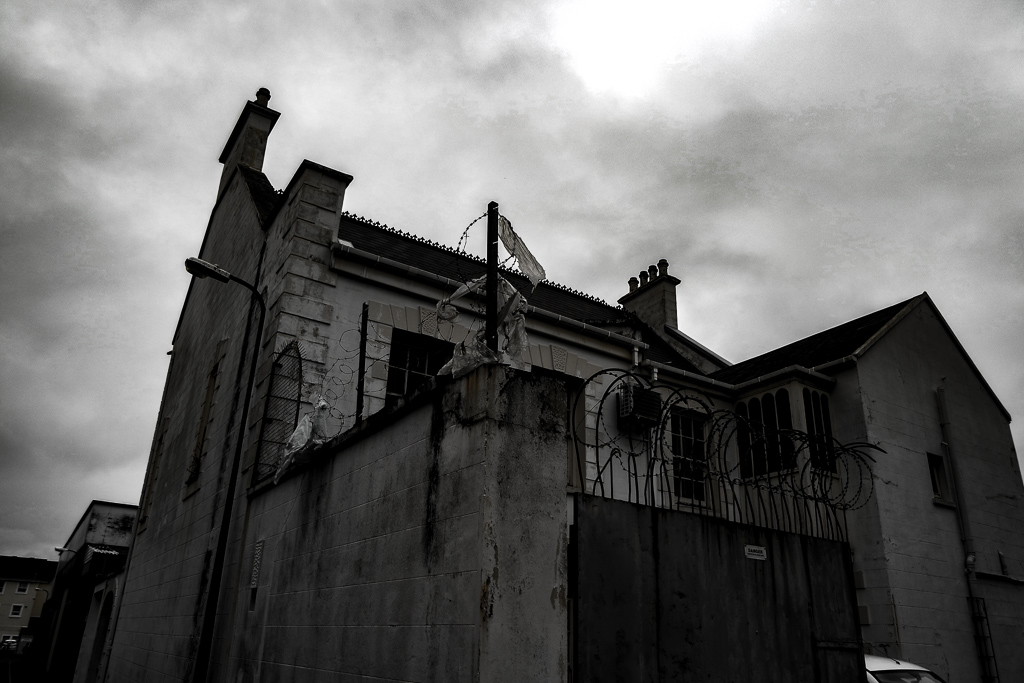
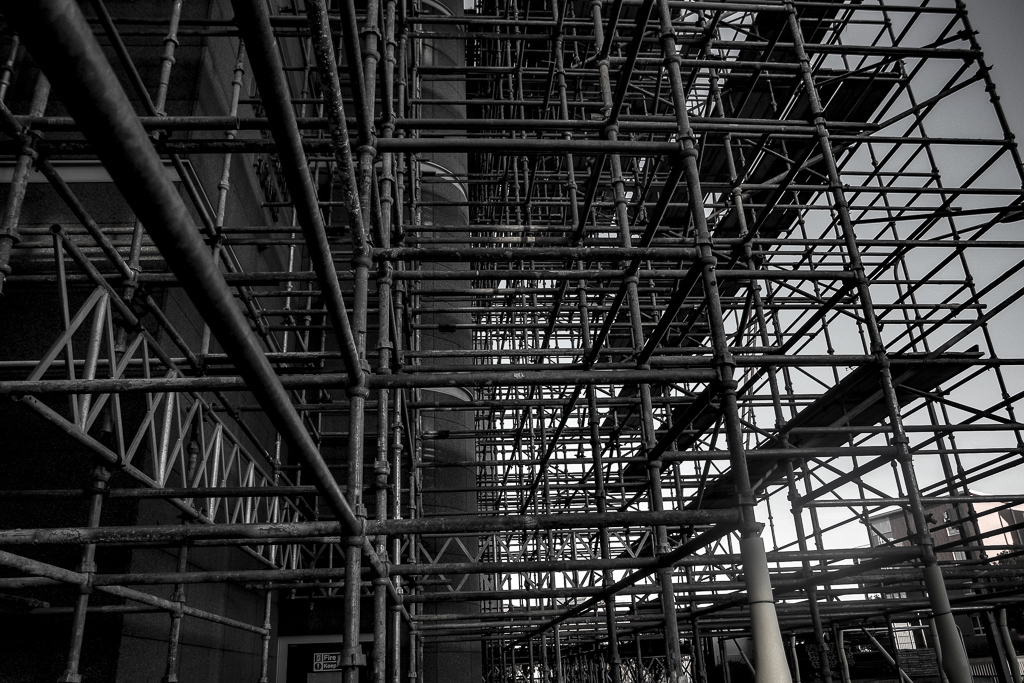
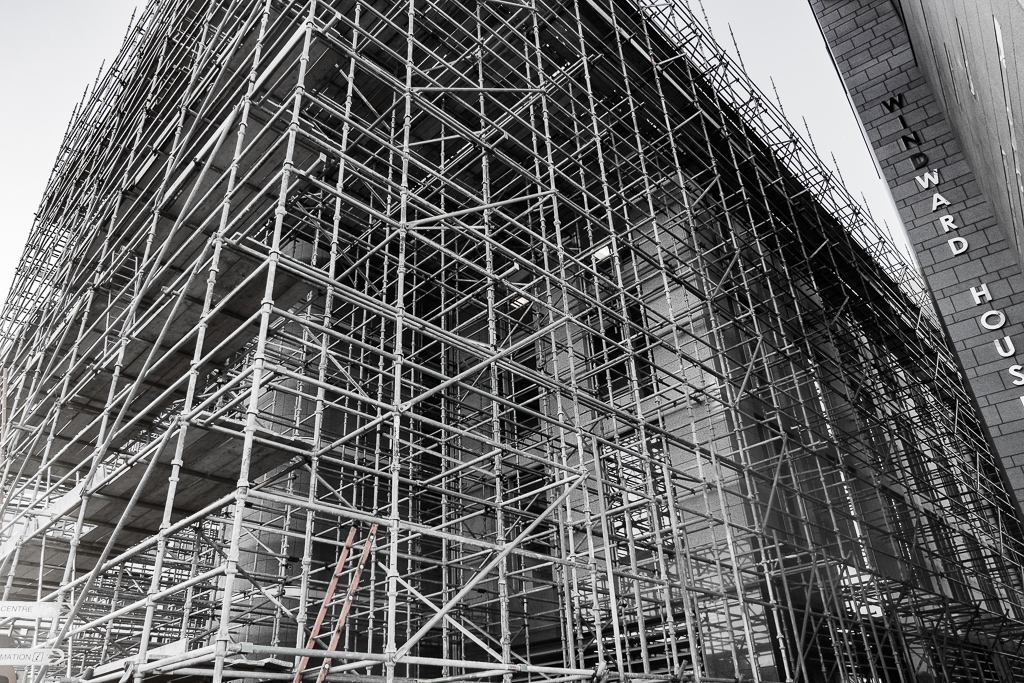
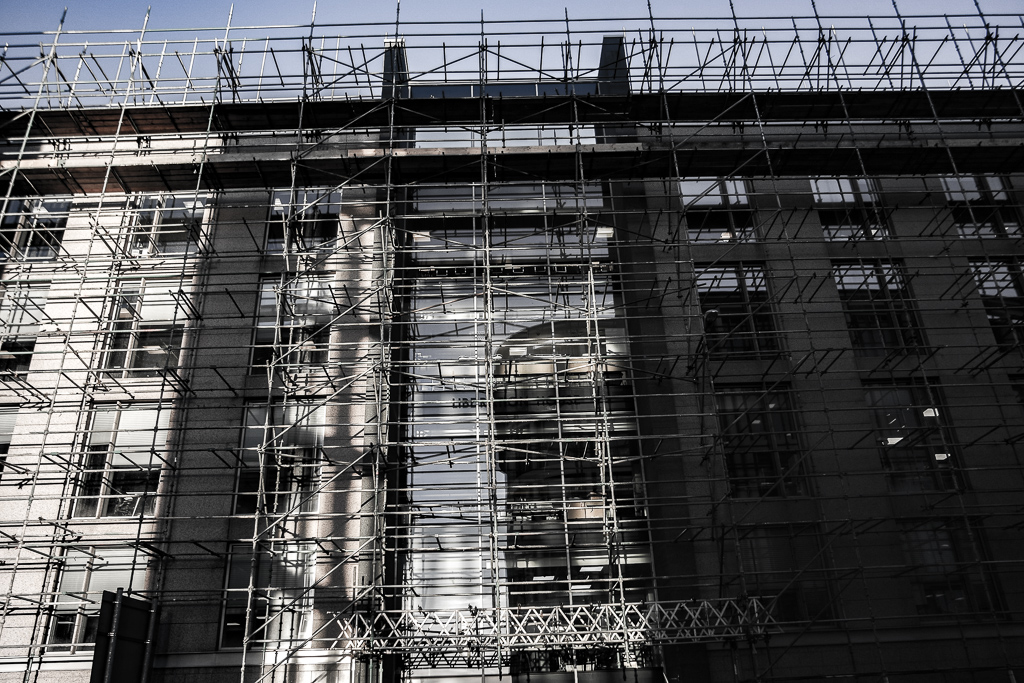
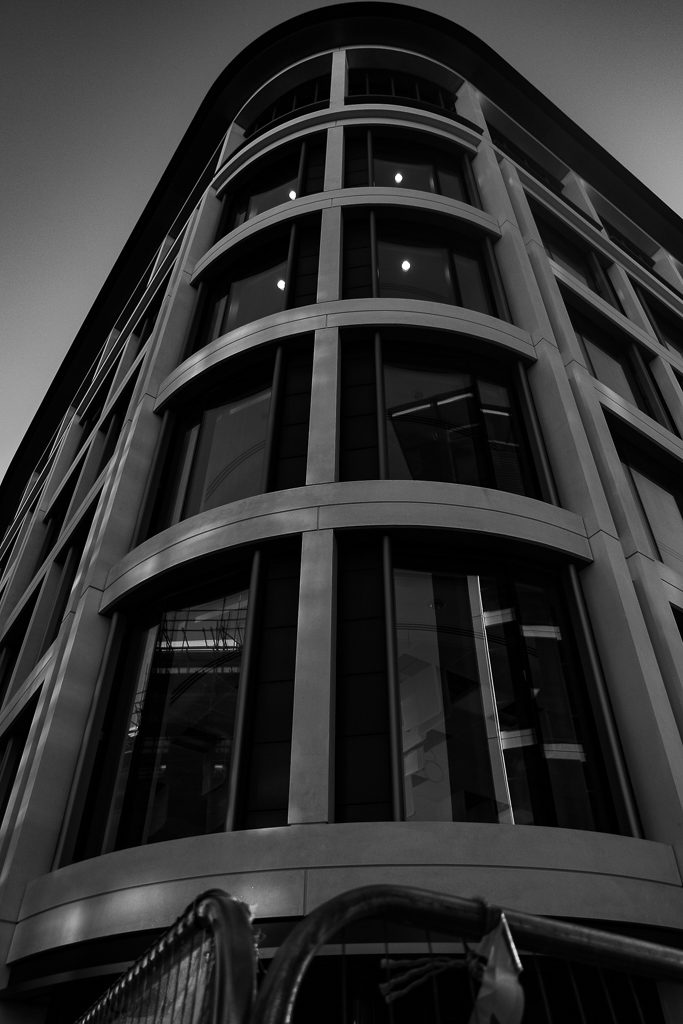

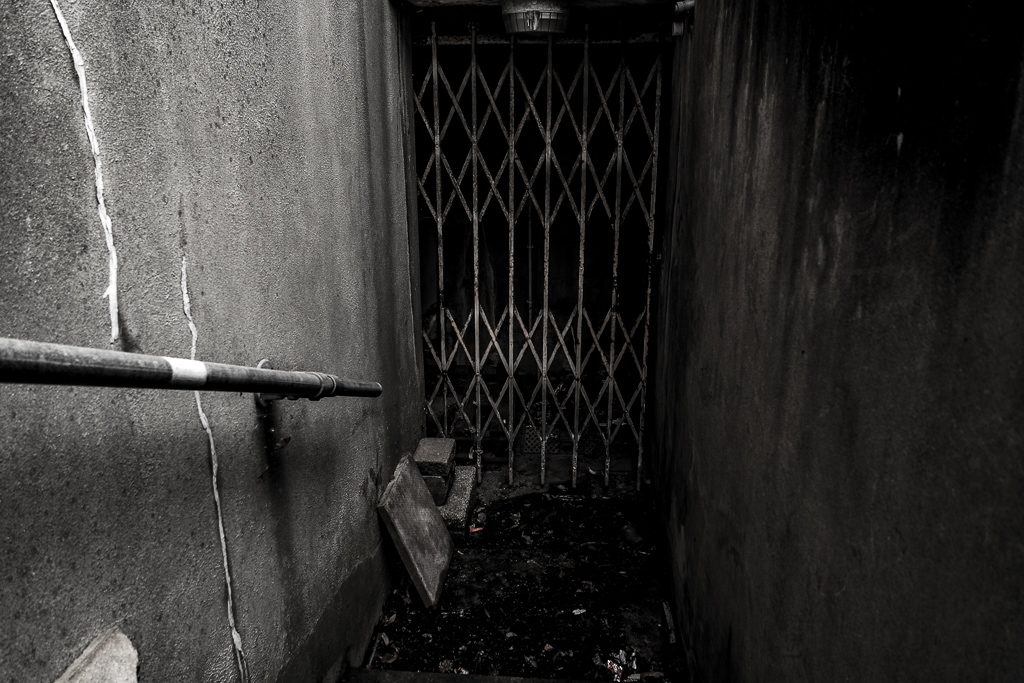
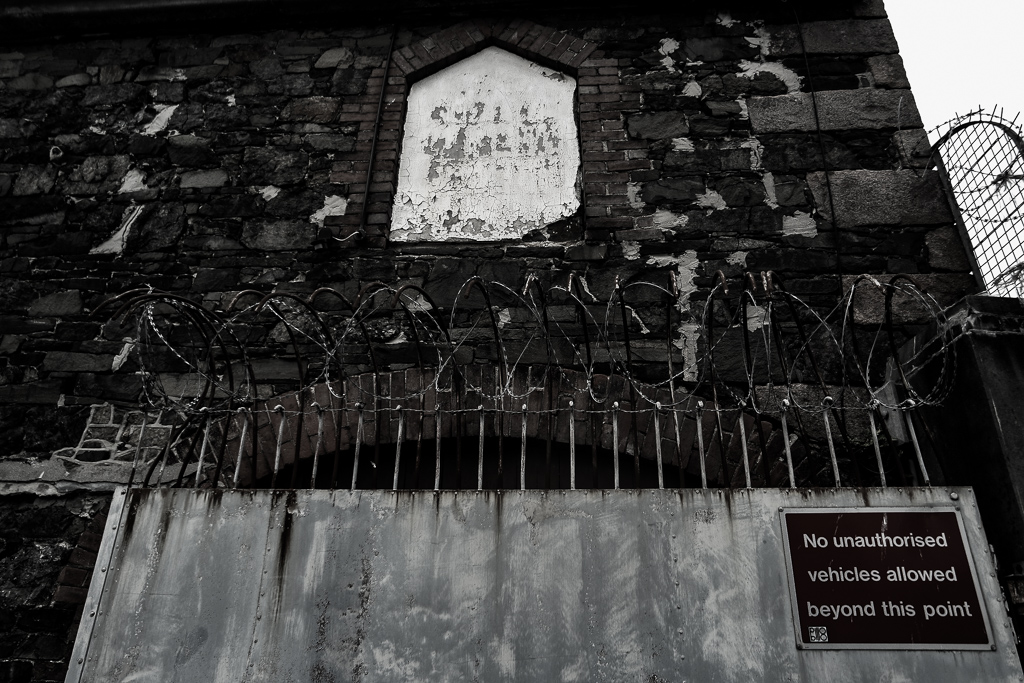
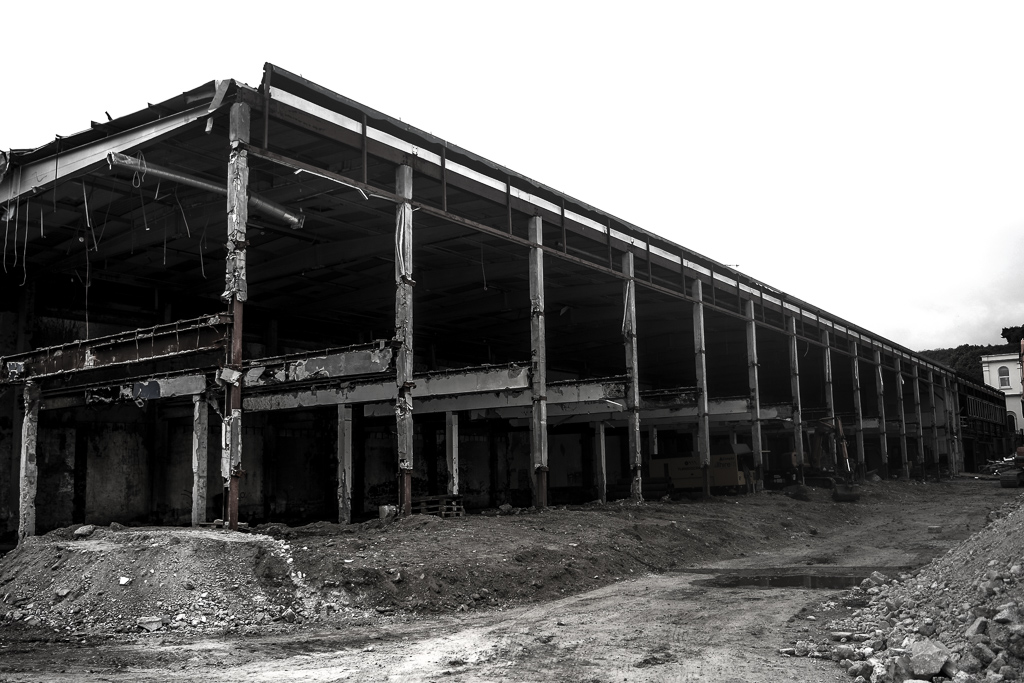
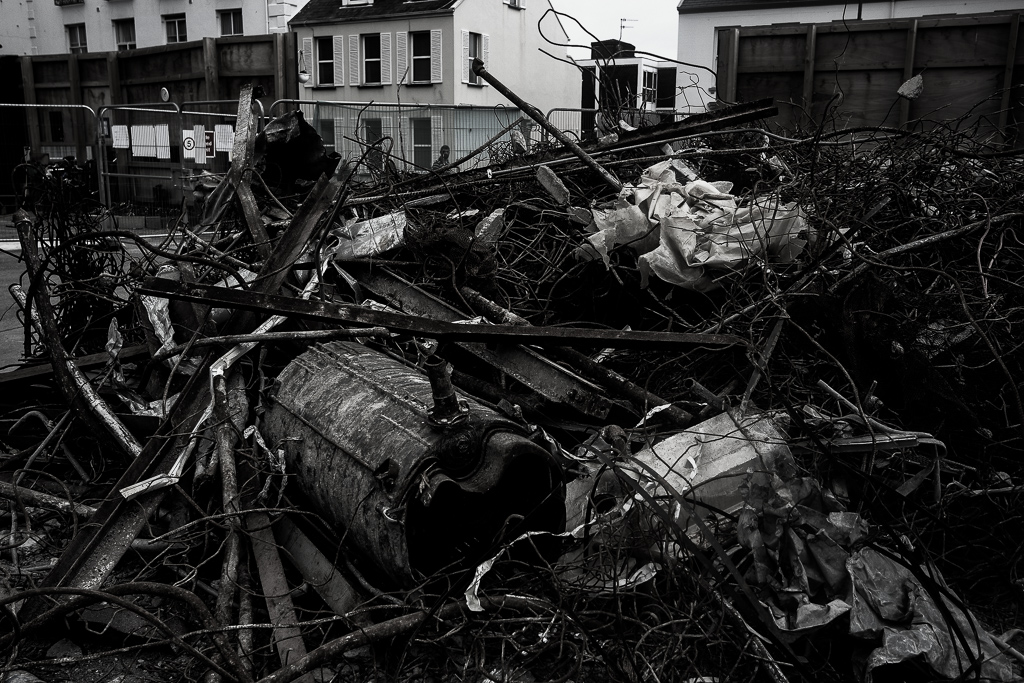
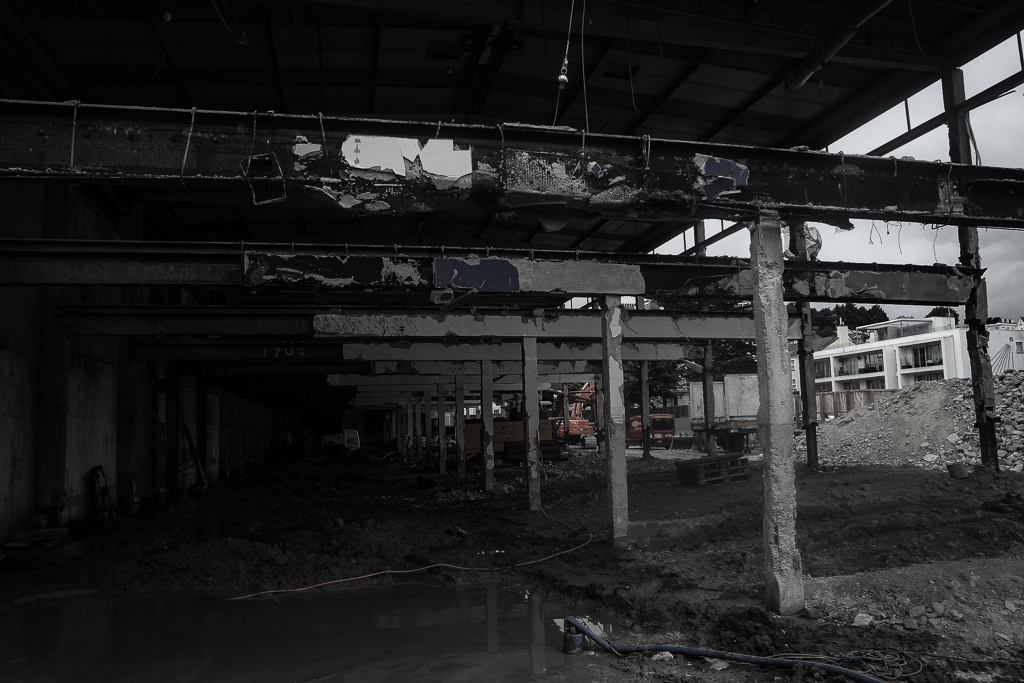


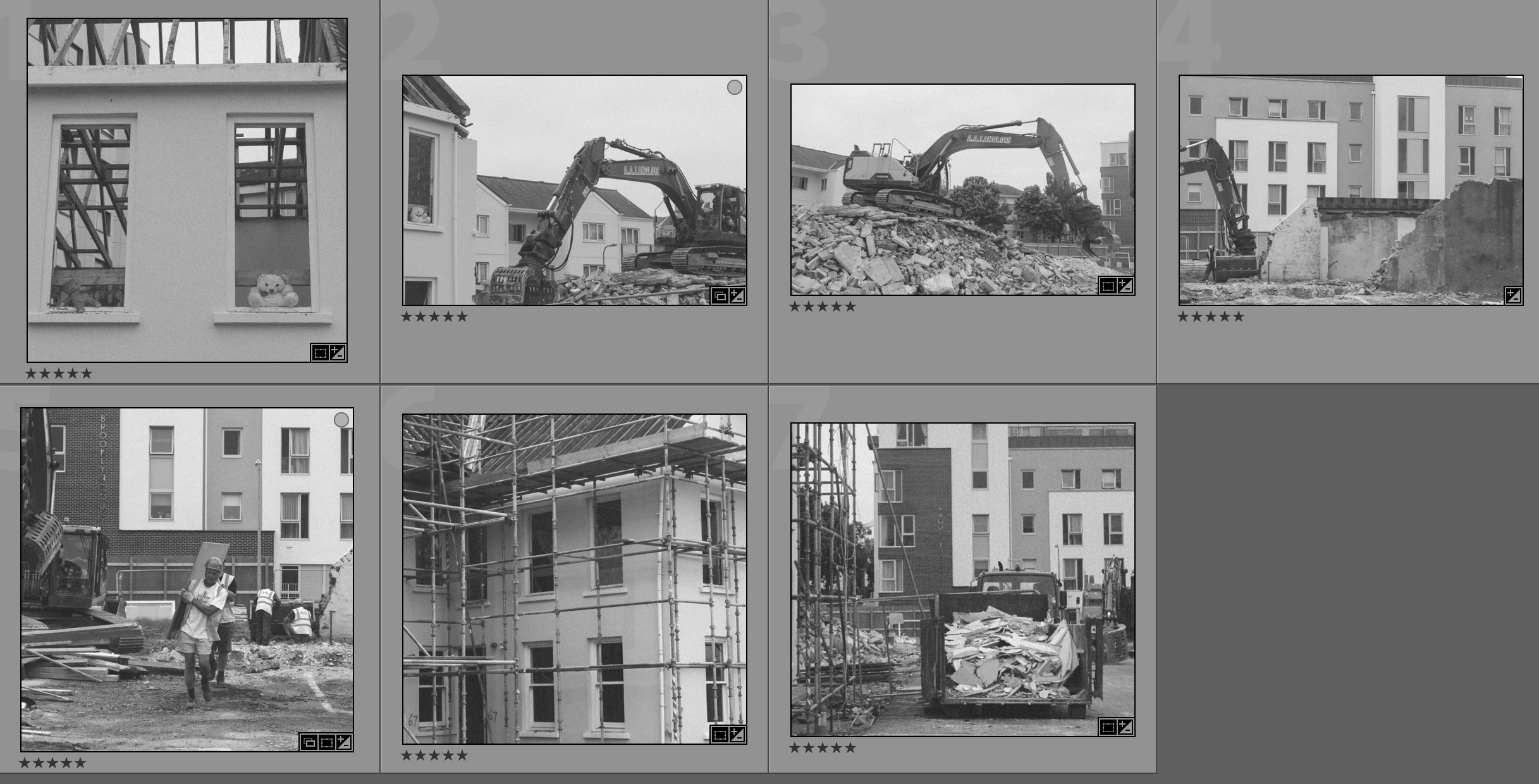


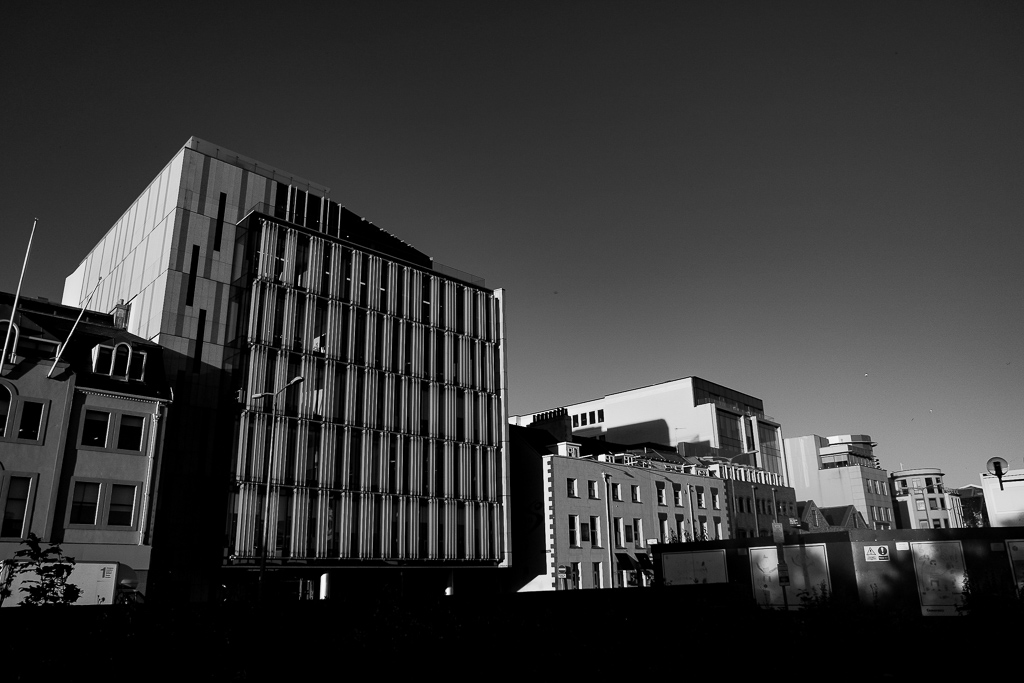
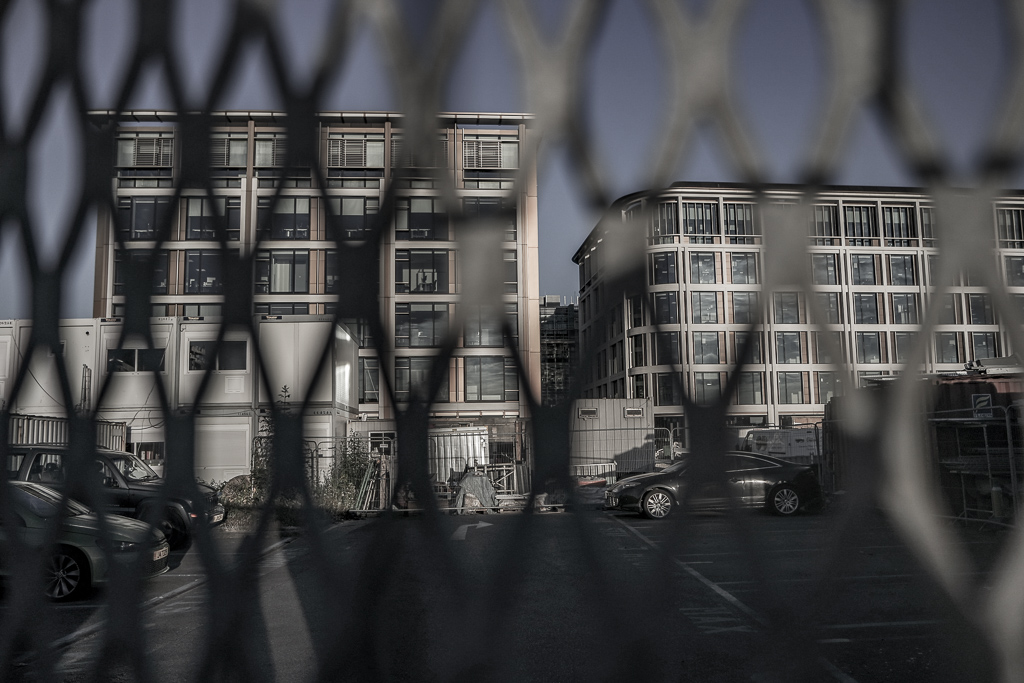

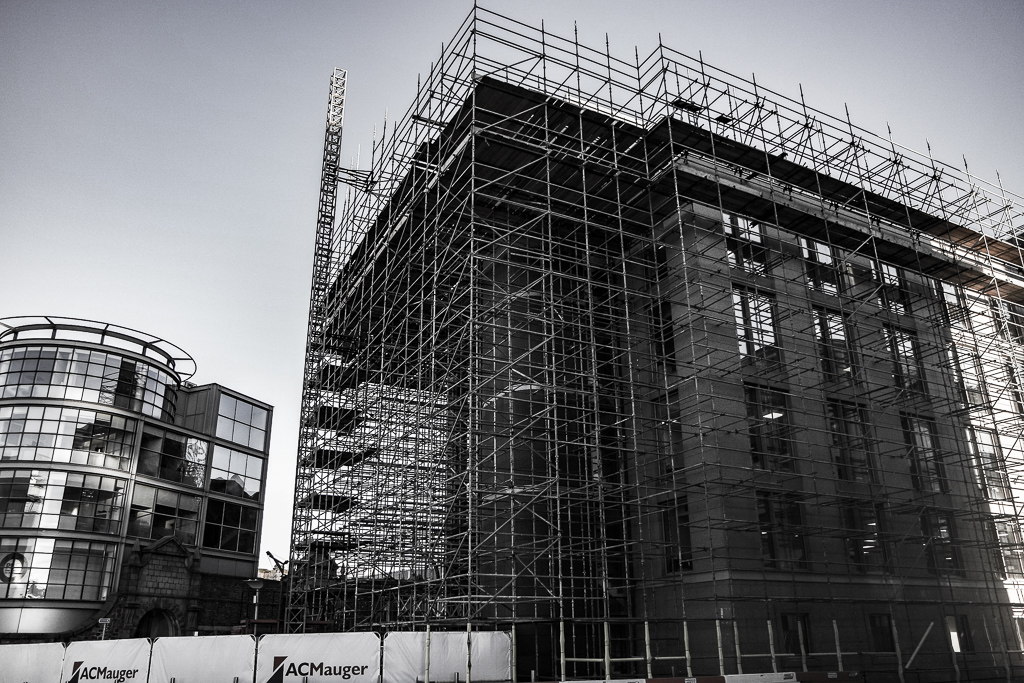
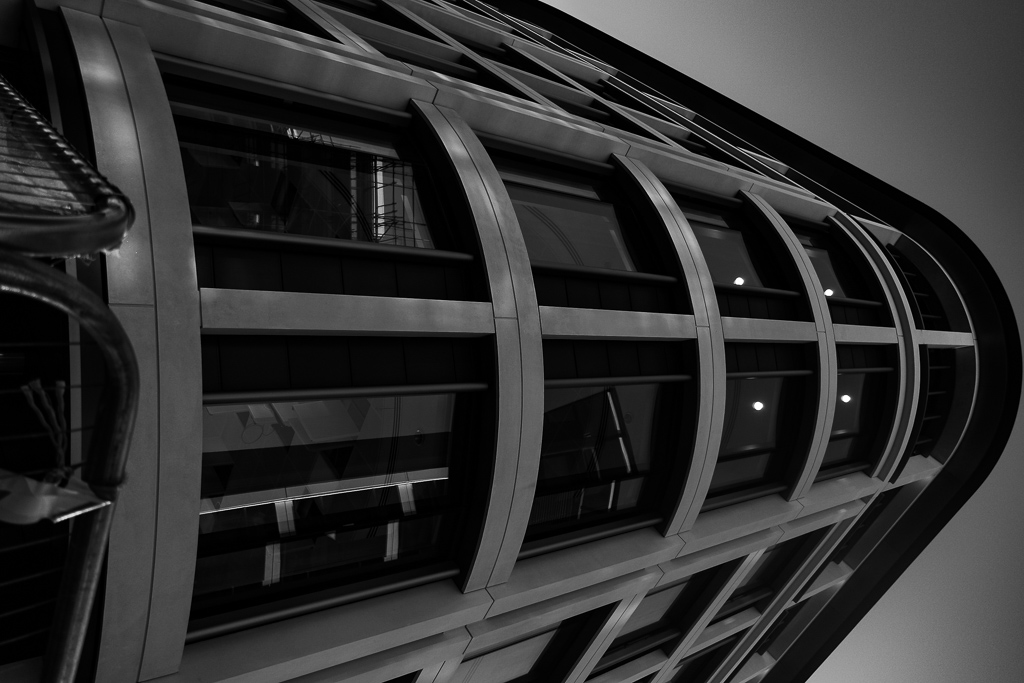
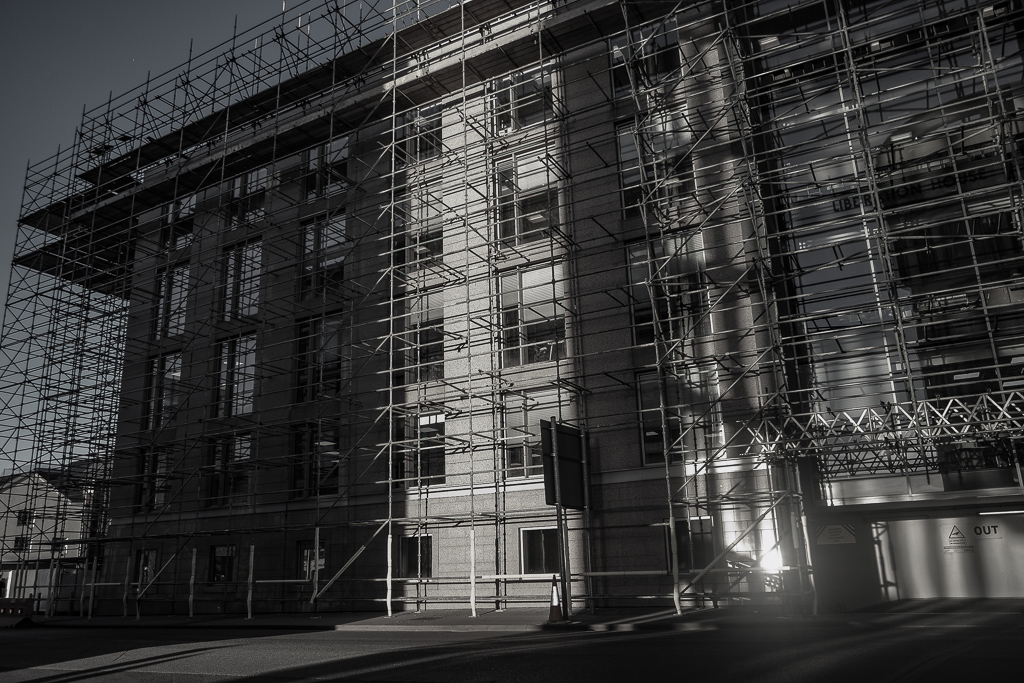


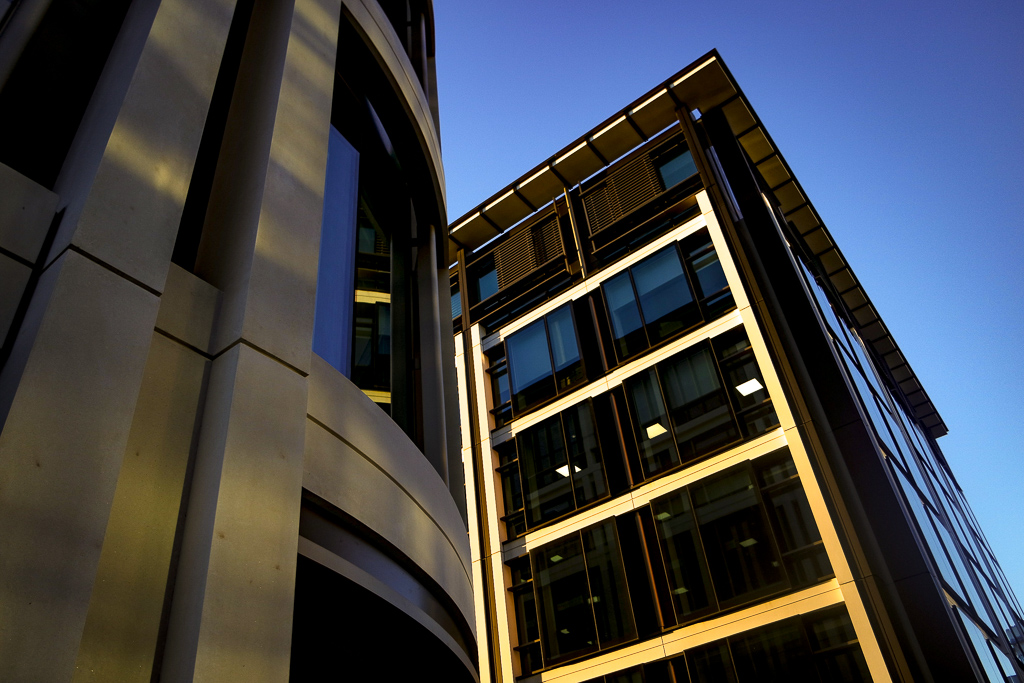
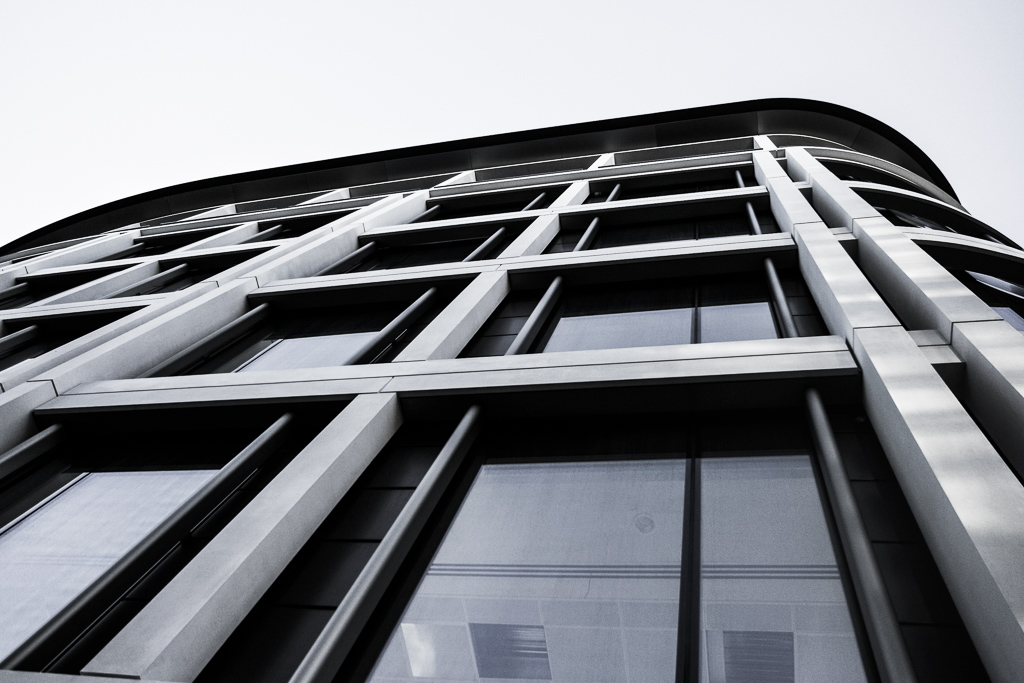


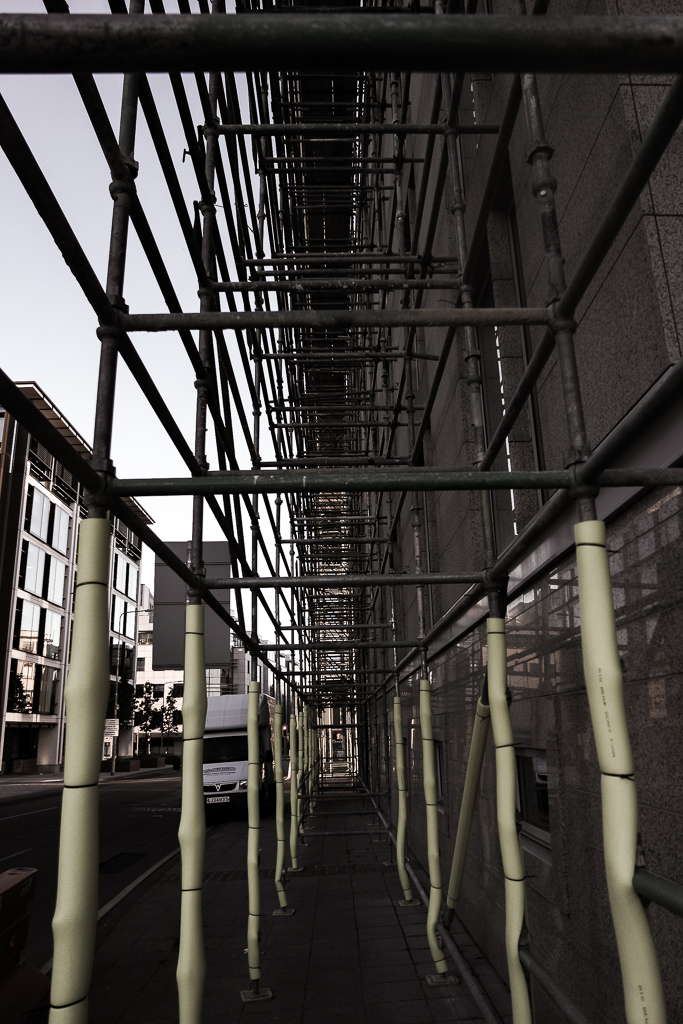
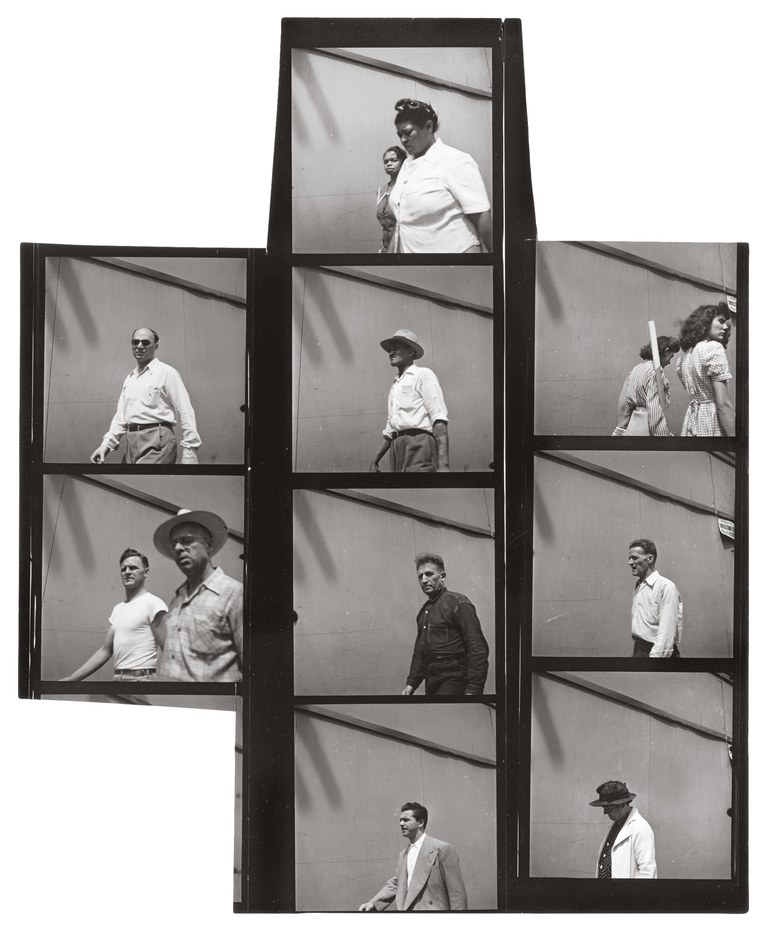
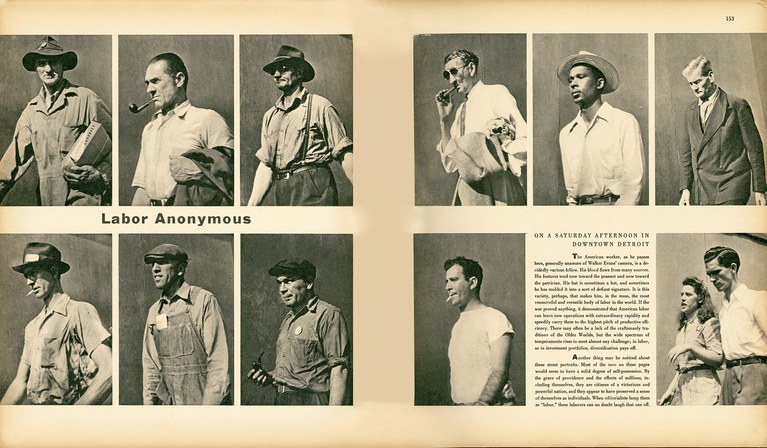
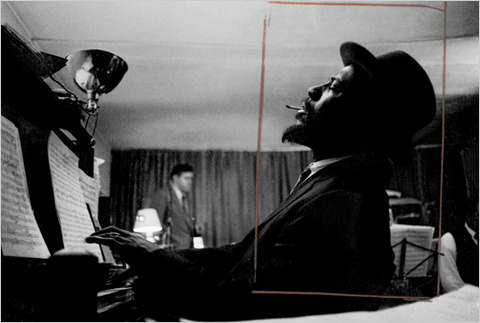




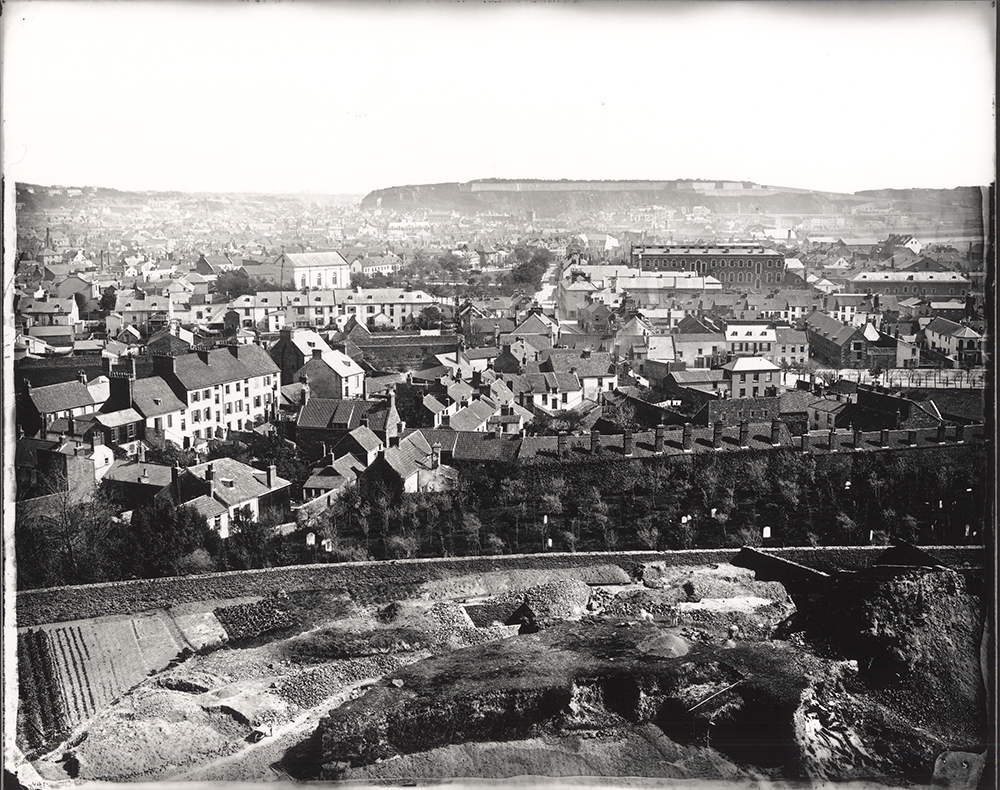



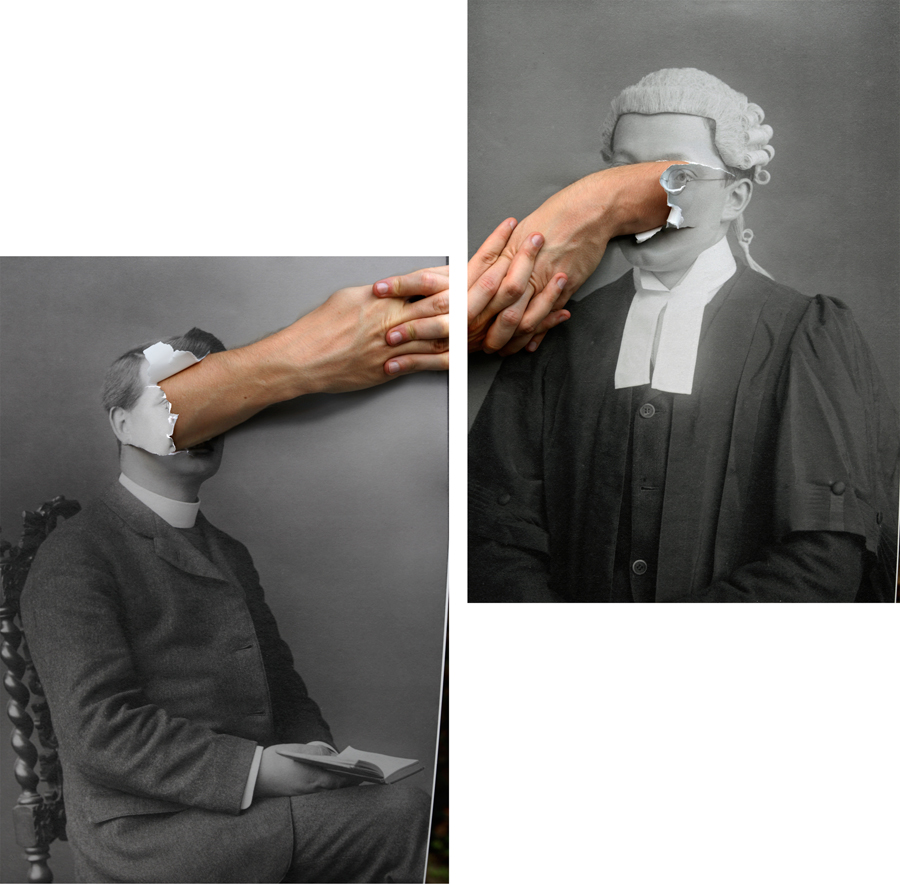








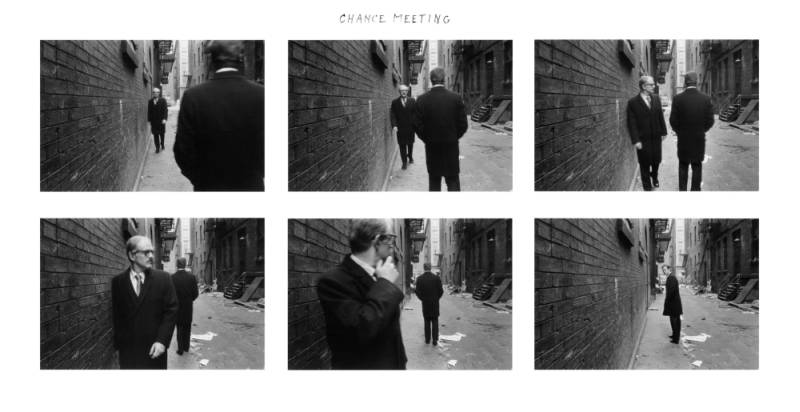
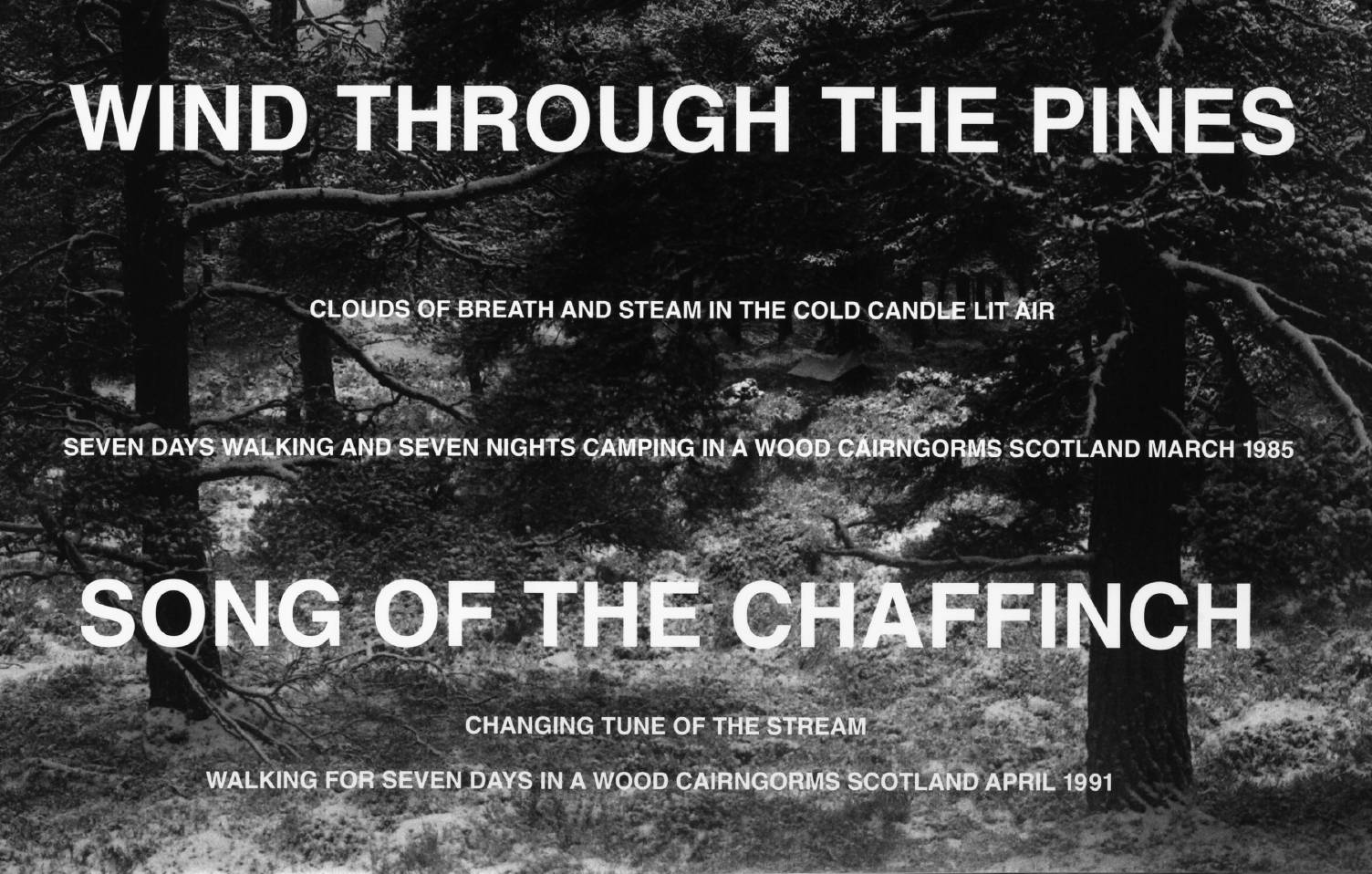
 I chose this crop because of the contrast which is created between the light and dark areas of the image, I found that this framed the piece whilst stopped it becoming to eye sore for the viewer from the amount of colours and objects. By transferring it to an A4 portrait size, I realized that a smoother transition formed from the bottom right to the top left very gradually, making it look more aesthetically pleasing as a result.
I chose this crop because of the contrast which is created between the light and dark areas of the image, I found that this framed the piece whilst stopped it becoming to eye sore for the viewer from the amount of colours and objects. By transferring it to an A4 portrait size, I realized that a smoother transition formed from the bottom right to the top left very gradually, making it look more aesthetically pleasing as a result. What made me crop this image was because of the symmetry which is available in the picture. To do this I straightened the image settings from the camera, which as a result but an equal distance from the border and building. It also trapped the grey sky above which contrasted the building well in my opinion and also stopped it being too overpowering.
What made me crop this image was because of the symmetry which is available in the picture. To do this I straightened the image settings from the camera, which as a result but an equal distance from the border and building. It also trapped the grey sky above which contrasted the building well in my opinion and also stopped it being too overpowering.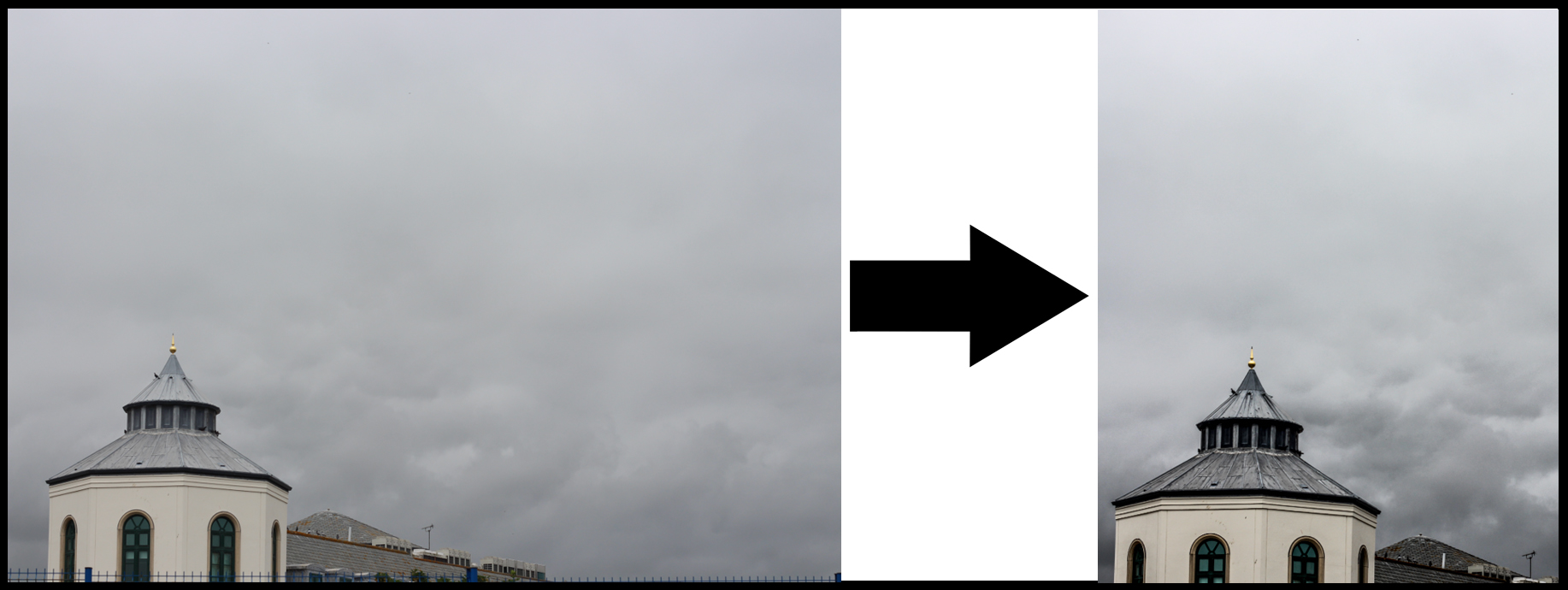 Finally for this image I made sure to crop the image to capture the tip of the building contrasted against the detail of the looming clouds above. I think this emphasized the buildings found in Jersey by how the dull colours matched that of the occasionally dull environment around it.
Finally for this image I made sure to crop the image to capture the tip of the building contrasted against the detail of the looming clouds above. I think this emphasized the buildings found in Jersey by how the dull colours matched that of the occasionally dull environment around it.